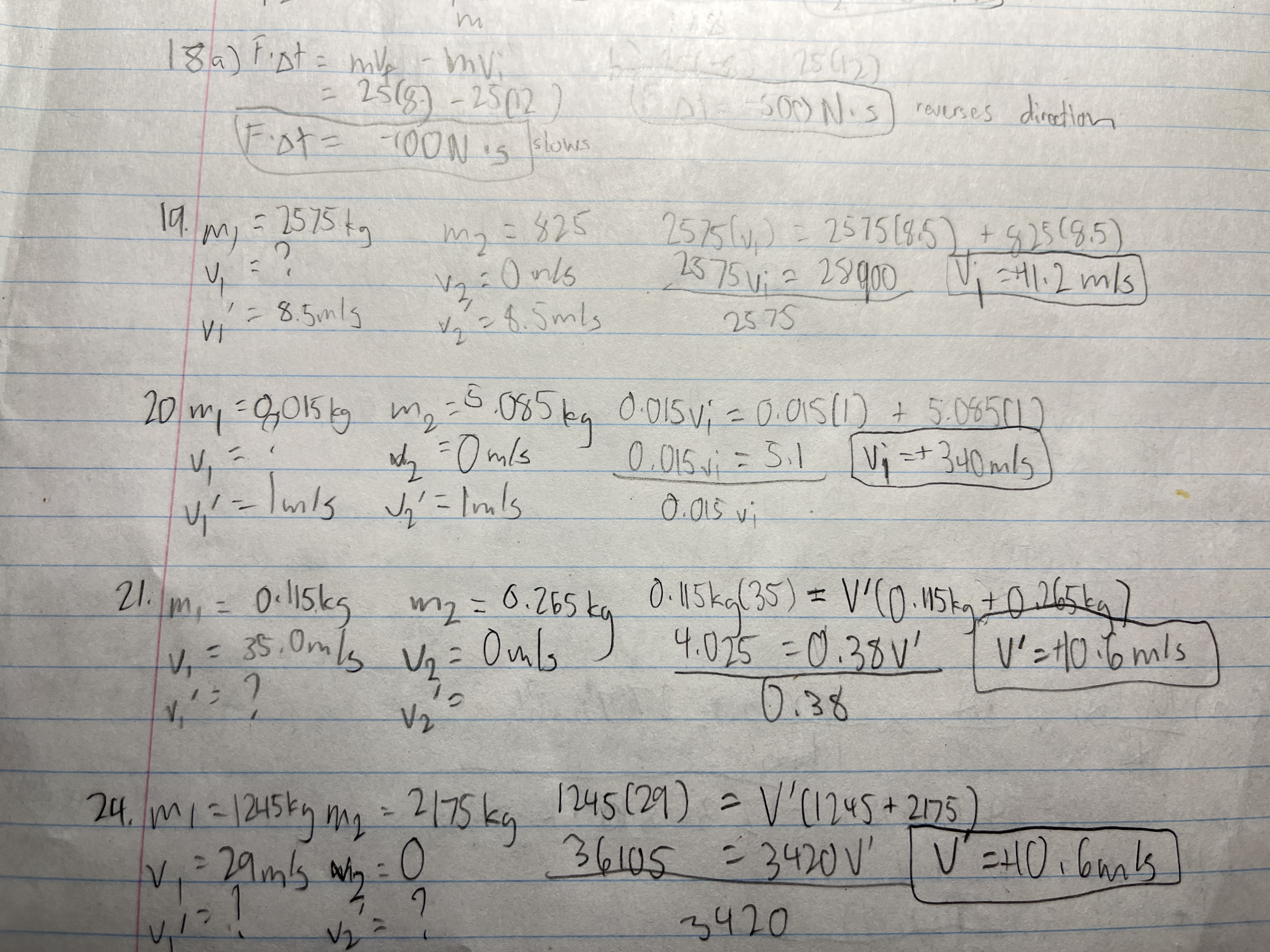Physics 11 - Momentum & Impulse (copy)
1/39
There's no tags or description
Looks like no tags are added yet.
Name | Mastery | Learn | Test | Matching | Spaced |
|---|
No study sessions yet.
40 Terms
What is the momentum of a 100 kg motorbike travelling at 10m/s?
p = mv
p = 100 kg * 10 m/s
p = +1.0 × 10³ kg * m/s
What is the mass of a plane that is travelling at 200 km/h and has a momentum of 1.1 × 10^6 kg * m/s (Step 1)
p = mv
m = m/v
What is the mass of a plane that is travelling at 200 km/h and has a momentum of 1.1 × 10^6 kg * m/s (Step 2)
p = mv
m = p/v
1.1 × 10^6 kg * m/s / 55.6 m/s
m = 2.0 × 10^4 kg
How fast does a 0.01 kg bug have to fly to have a momentum of 0.25 kg * m/s? Is this possible? (Step 1)
p = mv
v = p/m
How fast does a 0.01 kg bug have to fly to have a momentum of 0.25 kg * m/s? Is this possible? (Step 2)
p = mv
v = p/m
0.25 kg * m/s / 0.01 kg
= +25 m/s
A compact car, mass 725 kg, is moving at +100km/h.
a) Find its momentum
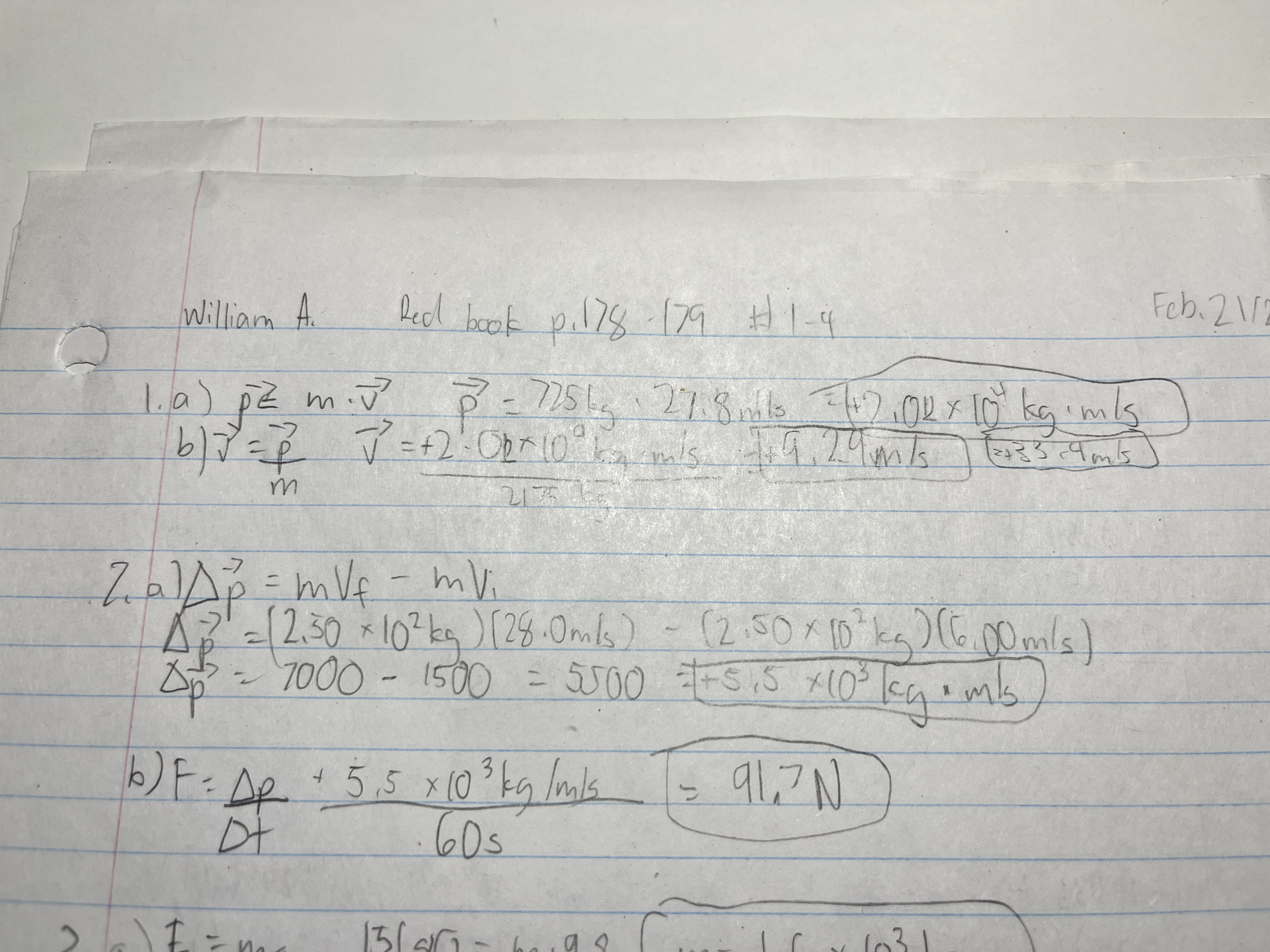
A compact car, mass 725 kg, is moving at +100km/h.
b) At what velocity is the momentum of a larger car, mass 2175 kg, equal to that of the smaller car?
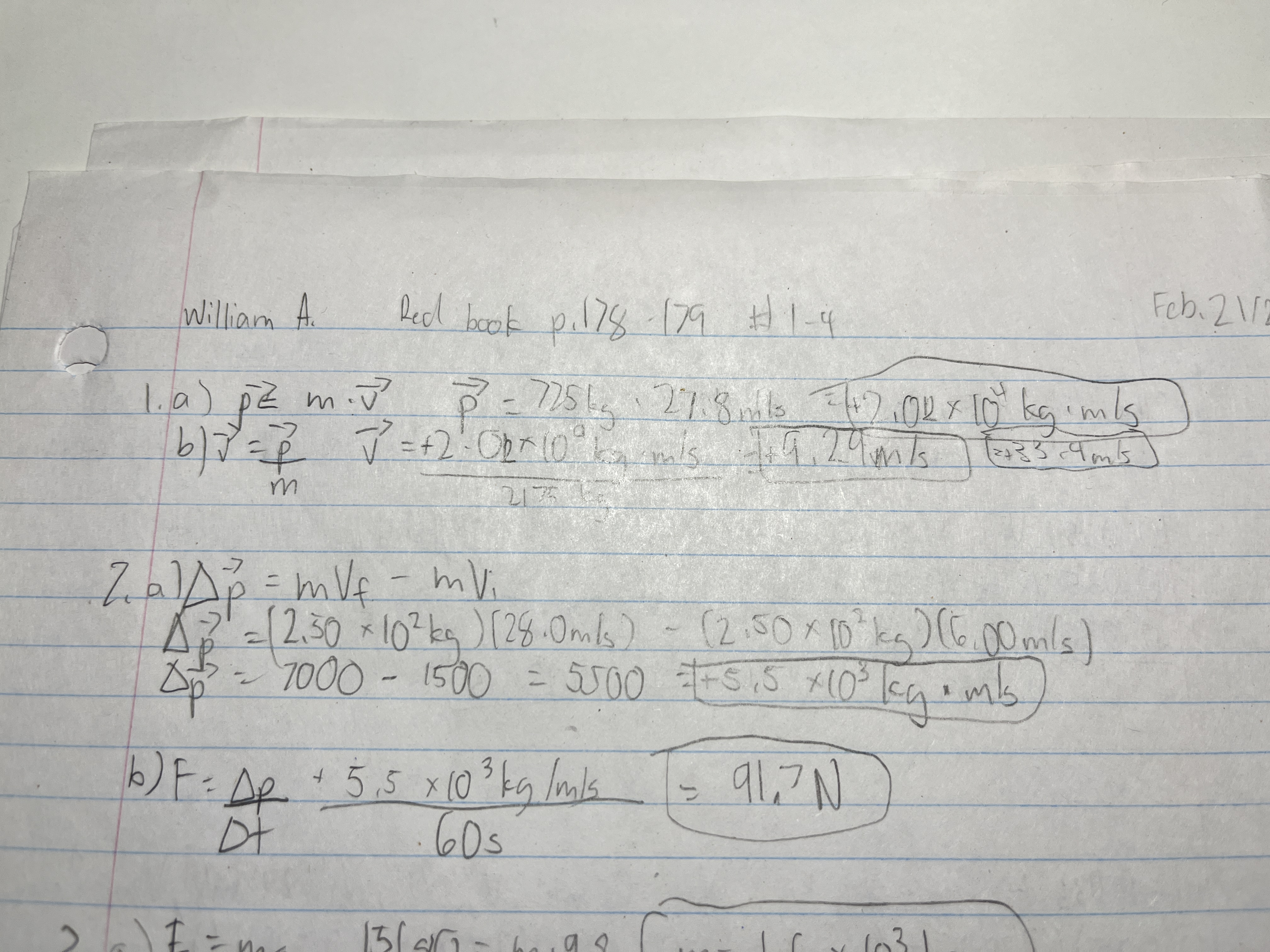
A snowmobile has a mass of 2.50 × 10² kg. A constant force is exerted on it for 60.0 s. The snowmobile’s initial velocity is 6.00 m/s and its final velocity 28.0 m/s.
a) What is its change in momentum?
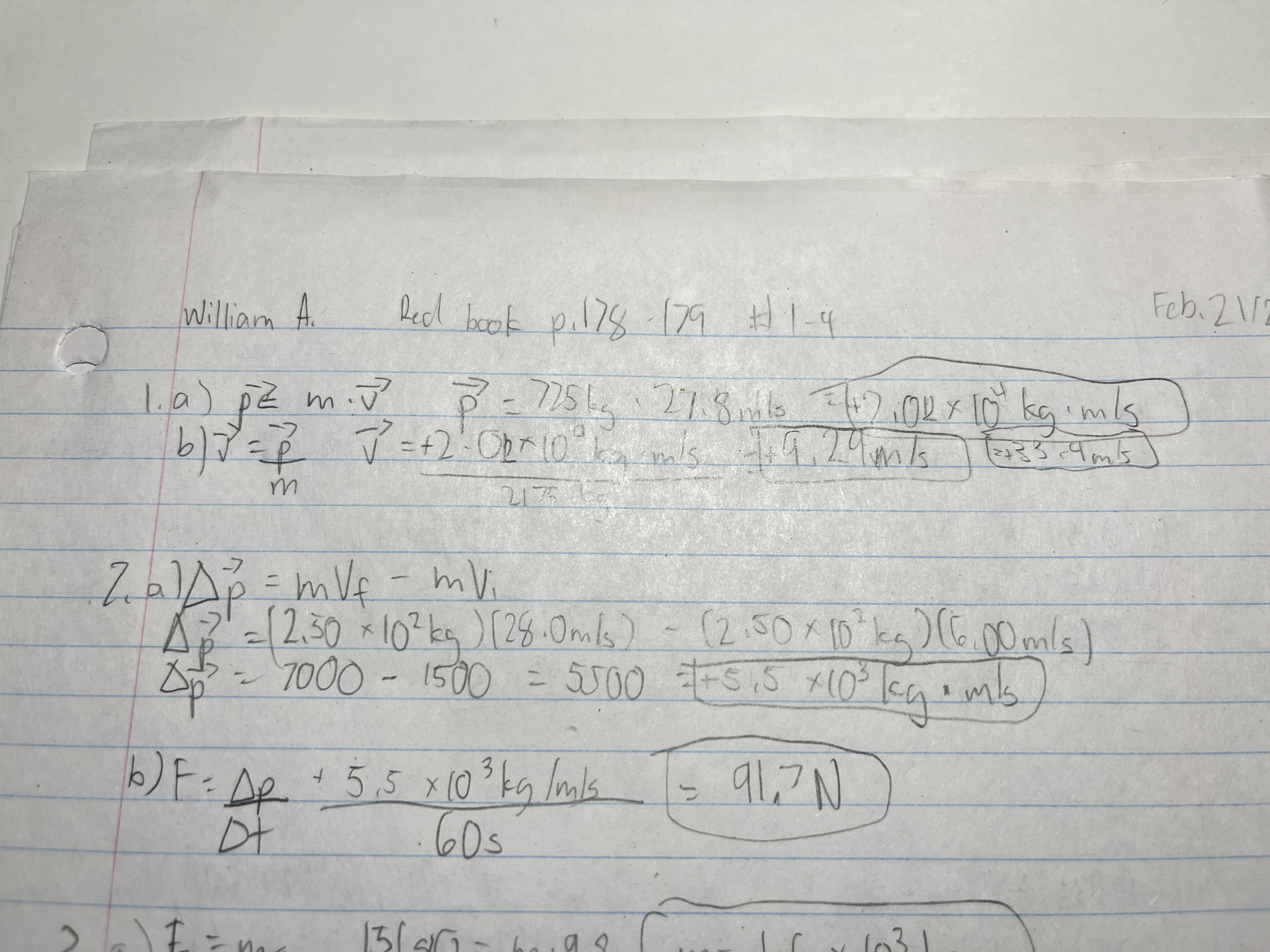
A snowmobile has a mass of 2.50 × 10² kg. A constant force is exerted on it for 60.0 s. The snowmobile’s initial velocity is 6.00 m/s and its final velocity 28.0 m/s.
b) What is the magnitude of the force exerted on it?
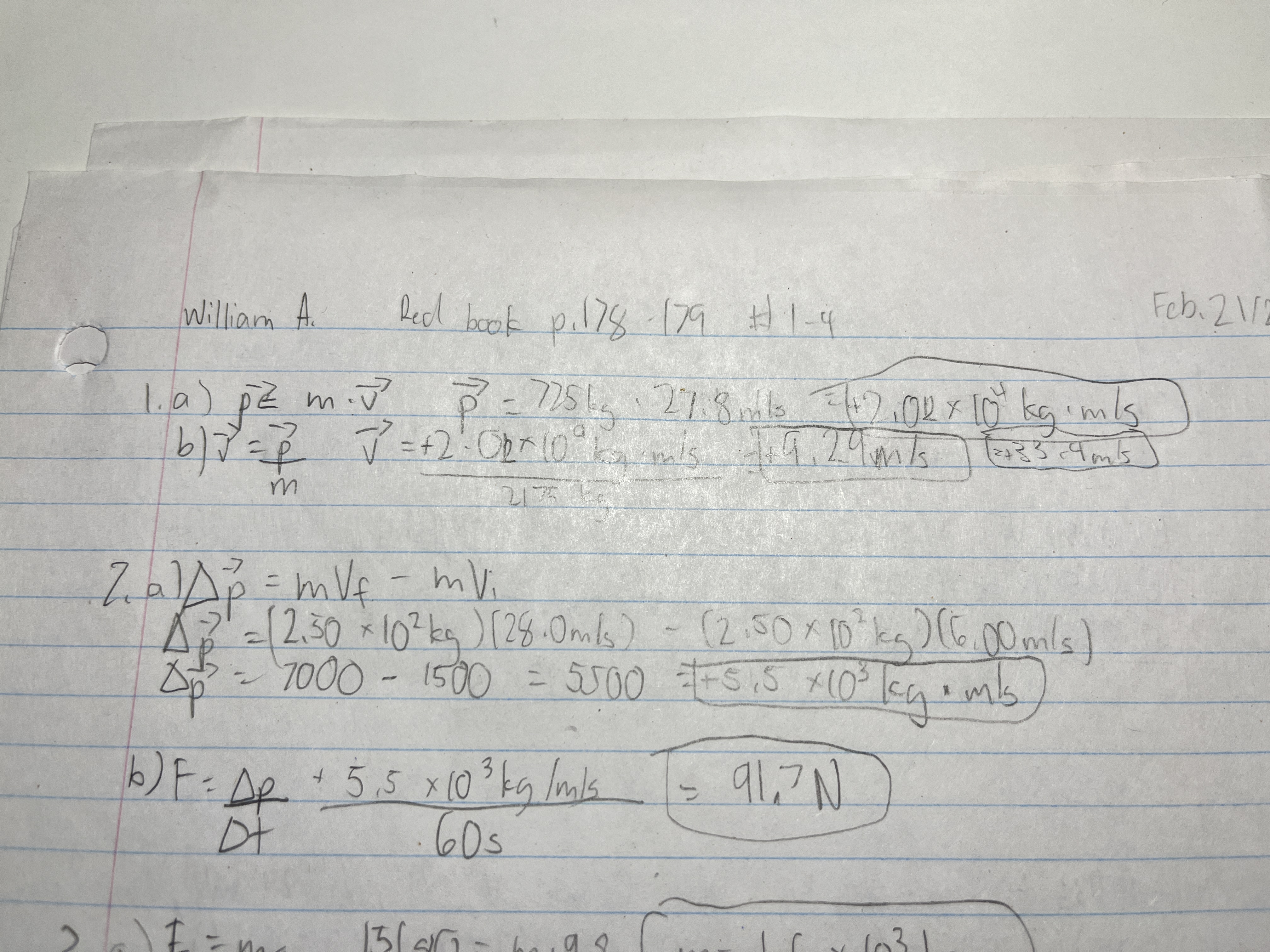
The brakes exert a 6.40 × 10² N force on a car weighing 15680 N and moving at 20.0 m/s. The car finally stops.
a) What is the car’s mass?

The brakes exert a 6.40 × 10² N force on a car weighing 15680 N and moving at 20.0 m/s. The car finally stops.
b) What is its initial momentum?
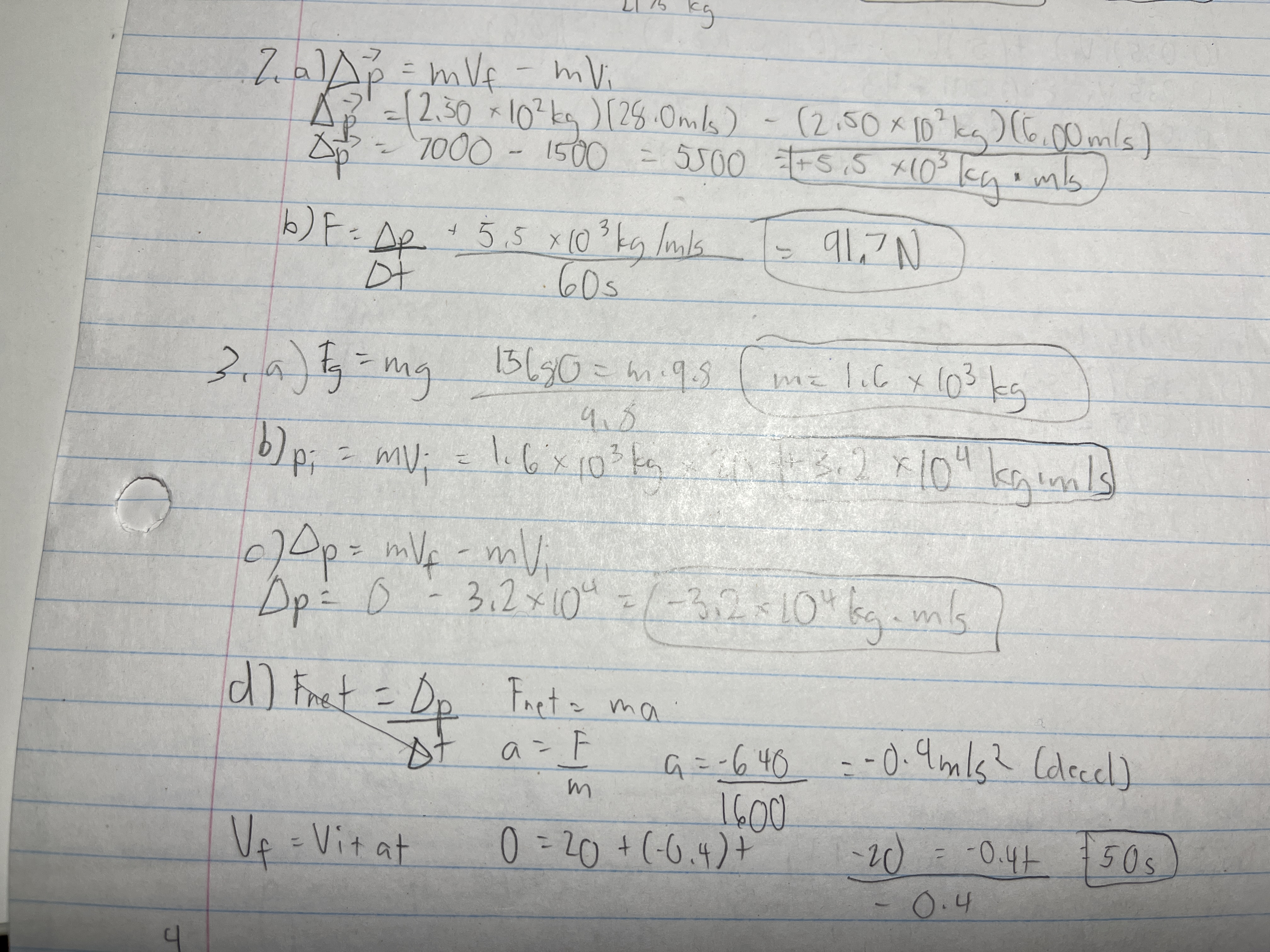
The brakes exert a 6.40 × 10² N force on a car weighing 15680 N and moving at 20.0 m/s. The car finally stops.
c) What is the change in the car’s momentum?
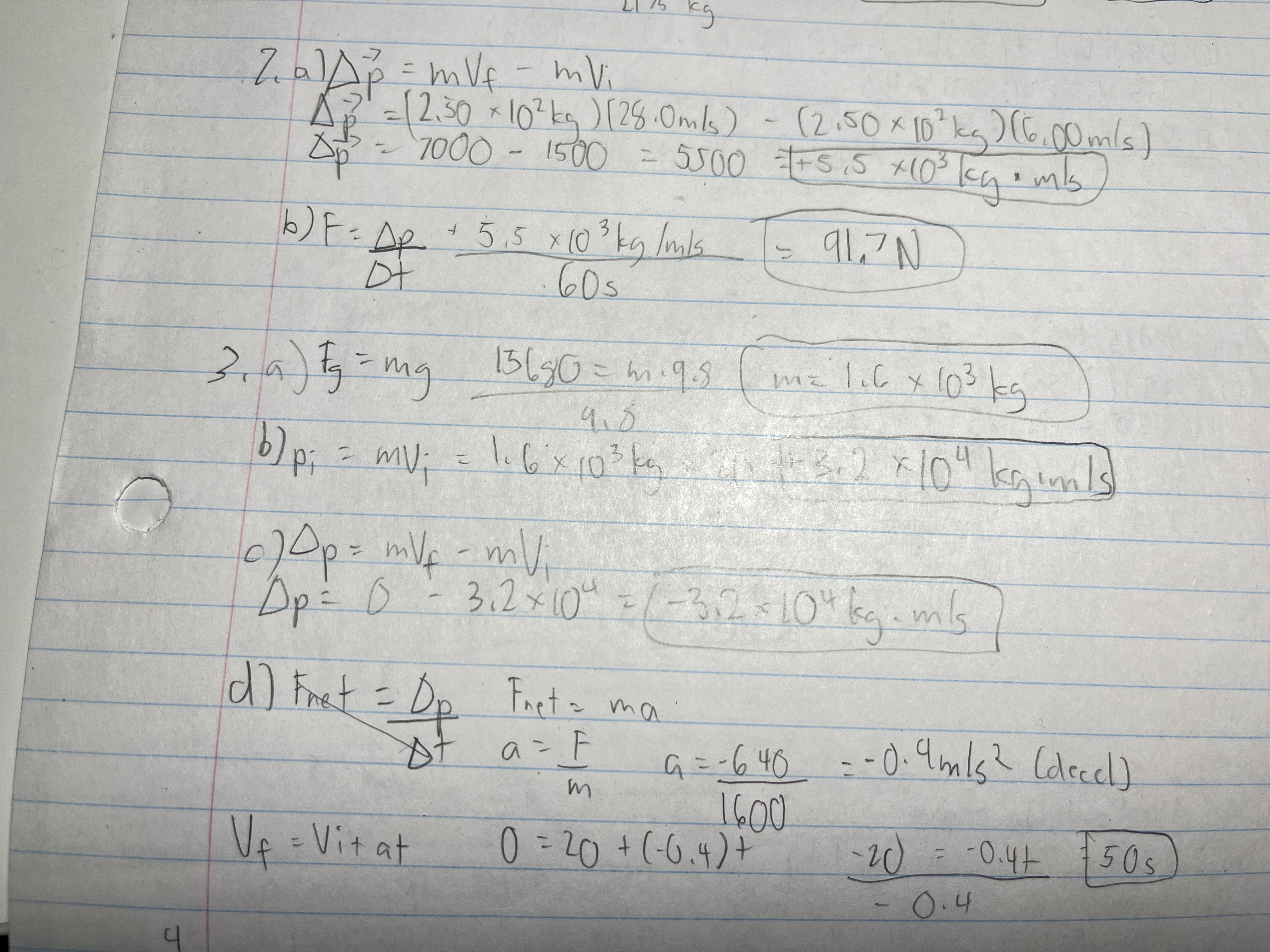
The brakes exert a 6.40 × 10² N force on a car weighing 15680 N and moving at 20.0 m/s. The car finally stops.
d) How long does the braking force act on the car to bring it to a halt?
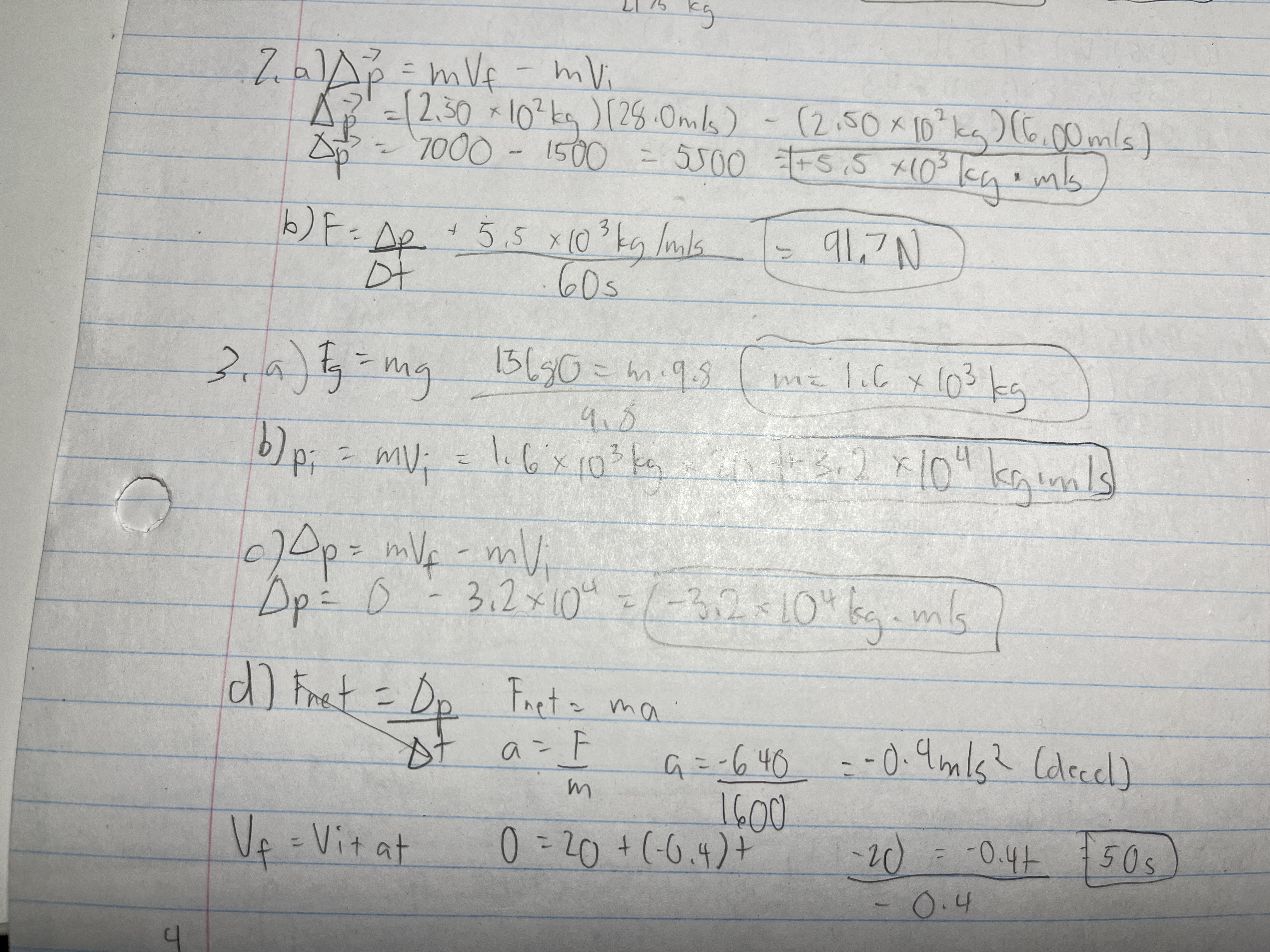
A 0.105 kg hockey puck moving at 48 m/s is caught by a 75 kg goalie at rest. With what speed does the goalie slide the ice?
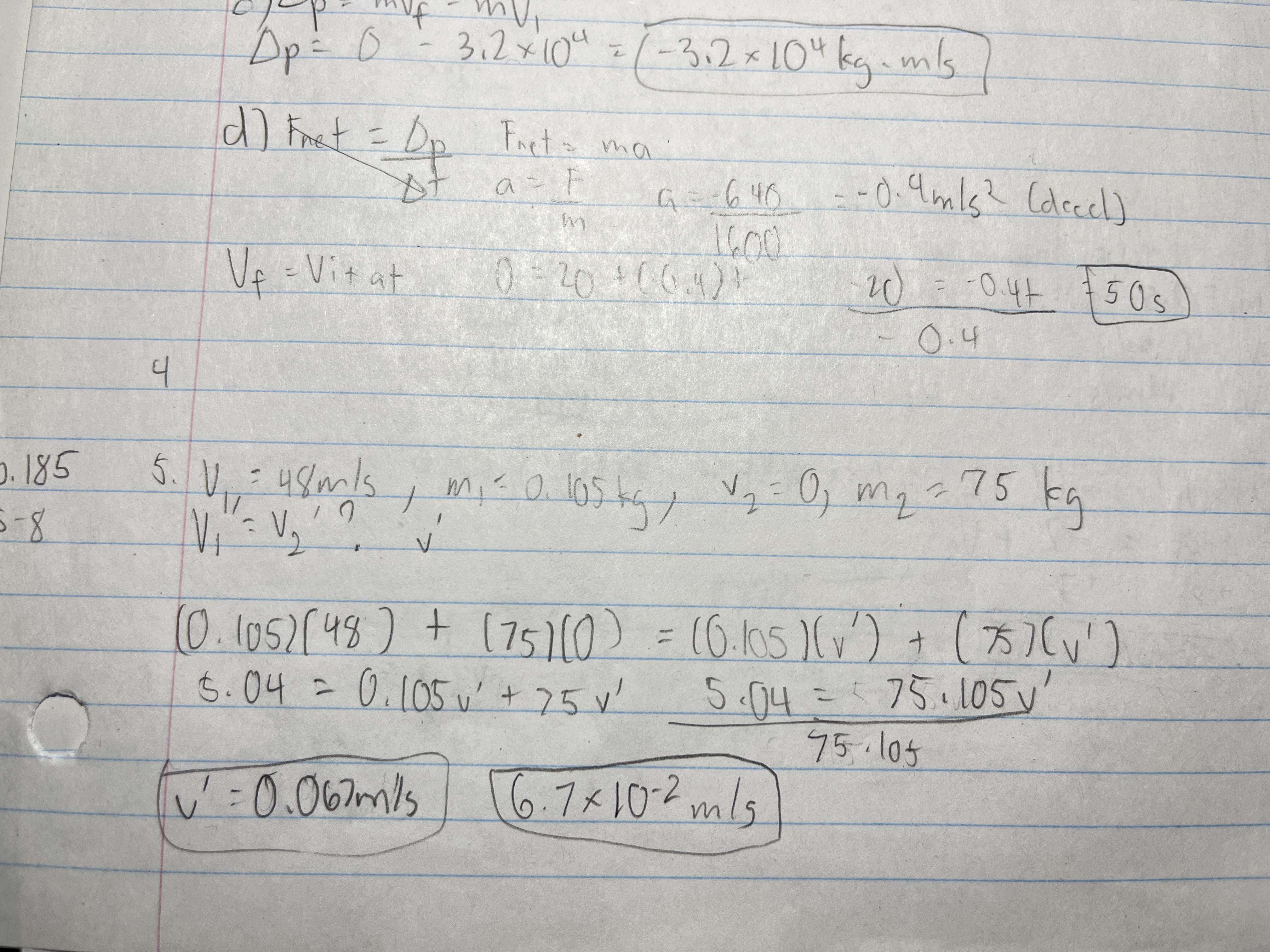
A 35.0 g bullet strikes a 5.0 kg stationary wooden block and embeds itself in the block. The block and bullet fly off together at 8.6 m/s. What was the original velocity of the bullet?
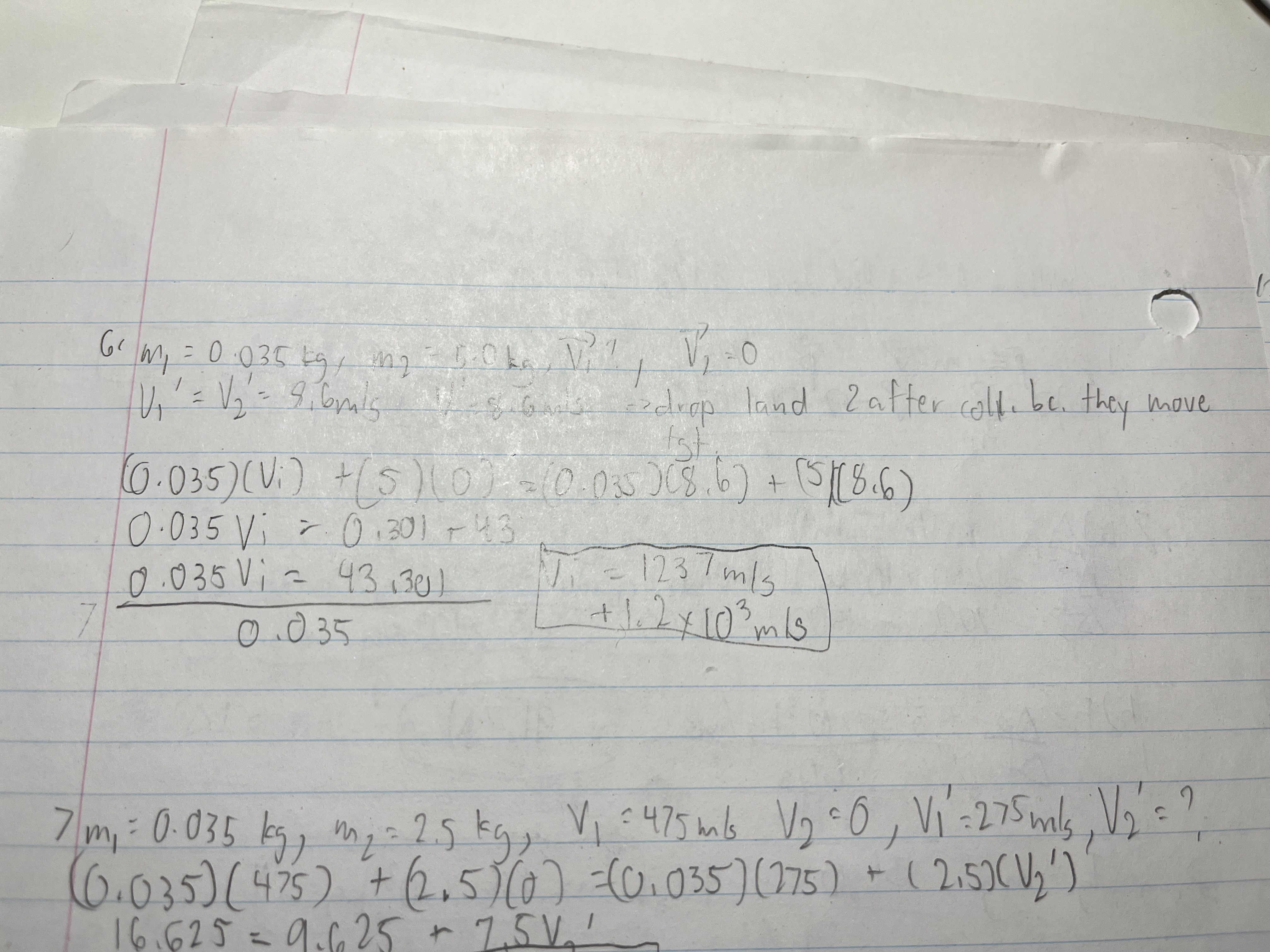
A 35.0 g bullet moving at 475 m/s strikes a 2.5 kg wooden block. The bullet passes through the block, leaving at 275 m/s. The block was at rest when it was hit. How fast is it moving when the bullet leaves?
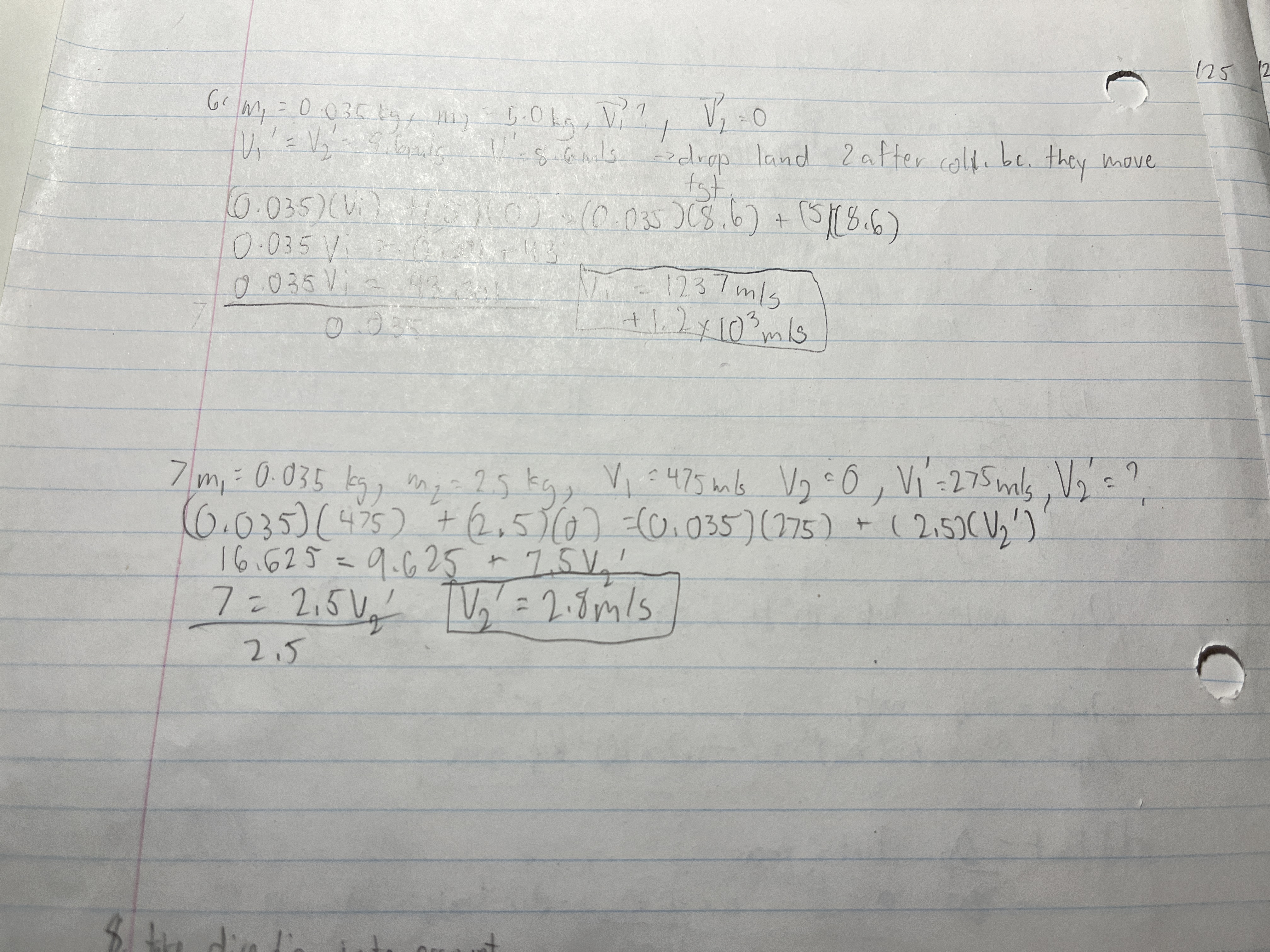
A 0.50 kg ball traveling at 6.0 m/s collides head-on with a 1.00 kg ball moving in the opposite direction at a velocity of -12.0 m/s. The 0.50 kg ball moves away at -14 m/s after the collision. Find the velocity of the second ball.
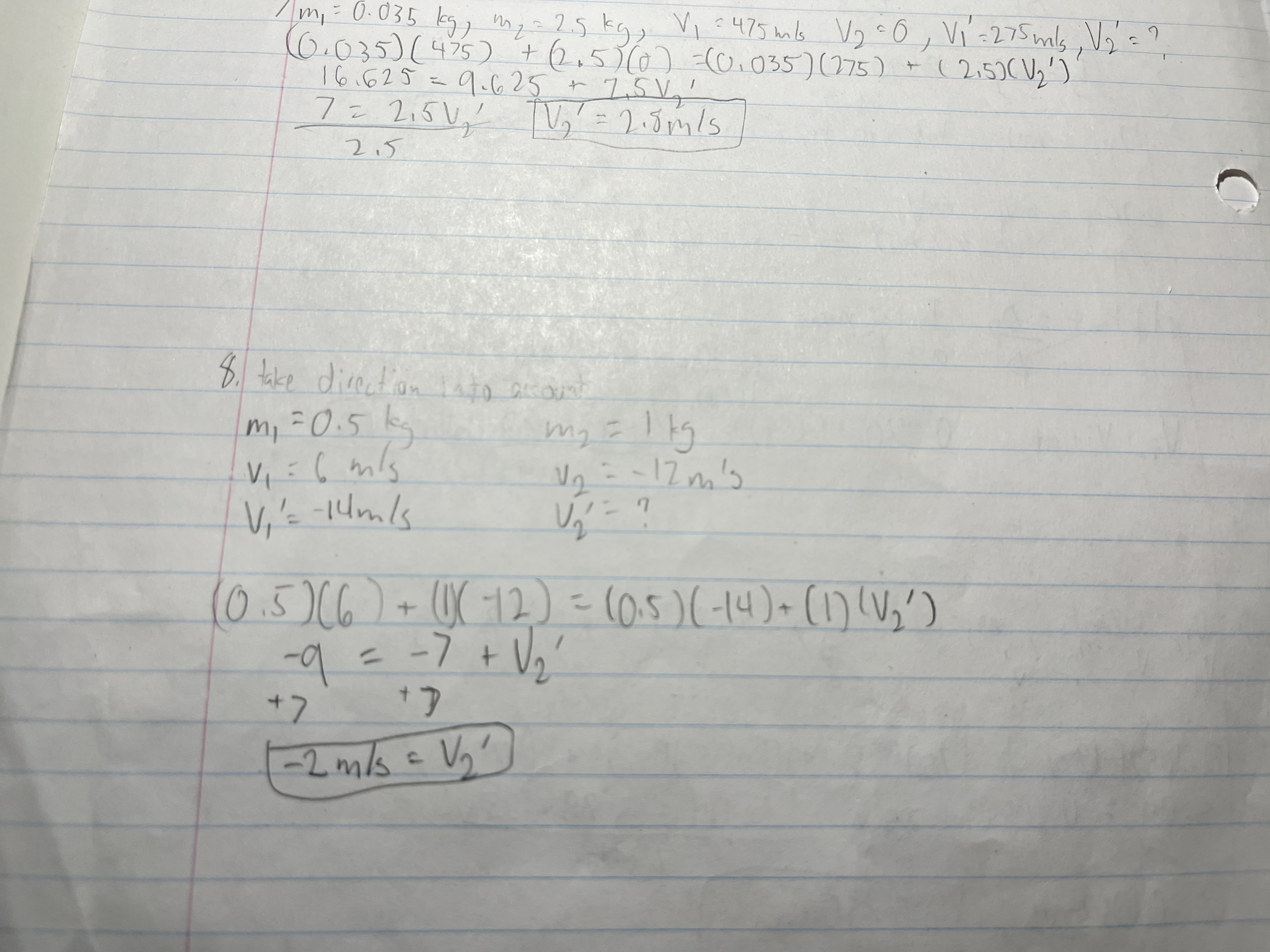
A 4.00 kg model rocket is launched, shooting 50.0 g of burned fuel from its exhaust at an average velocity of 625 m/s. What is the velocity of the rocket after the fuel has burned? (Ignore effects of gravity and air resistance)
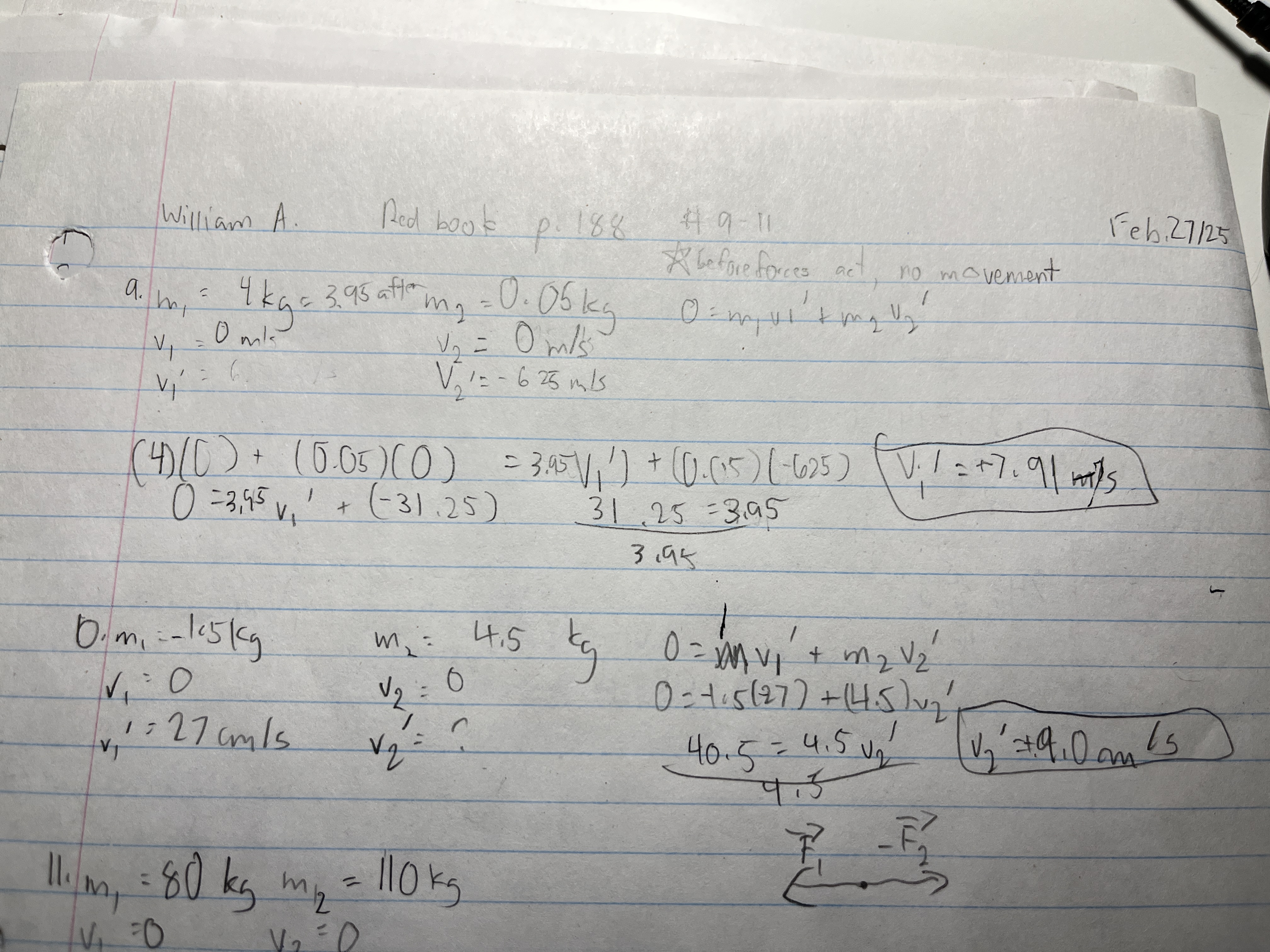
A thread holds two carts together on a frictionless surface. A compressed spring acts upon the carts. After the thread is burned, the 1.5 kg cart moves with a velocity of 27 cm/s to the left. What is the velocity of the 4.5 kg cart?

Two campers dock a canoe. One camper steps onto the dock. This camper has a mass of 80.0 kg and moves forward at 4.0 m/s. With what speed and direction do the canoe and the other camper move if their combined mass of 110 kg?
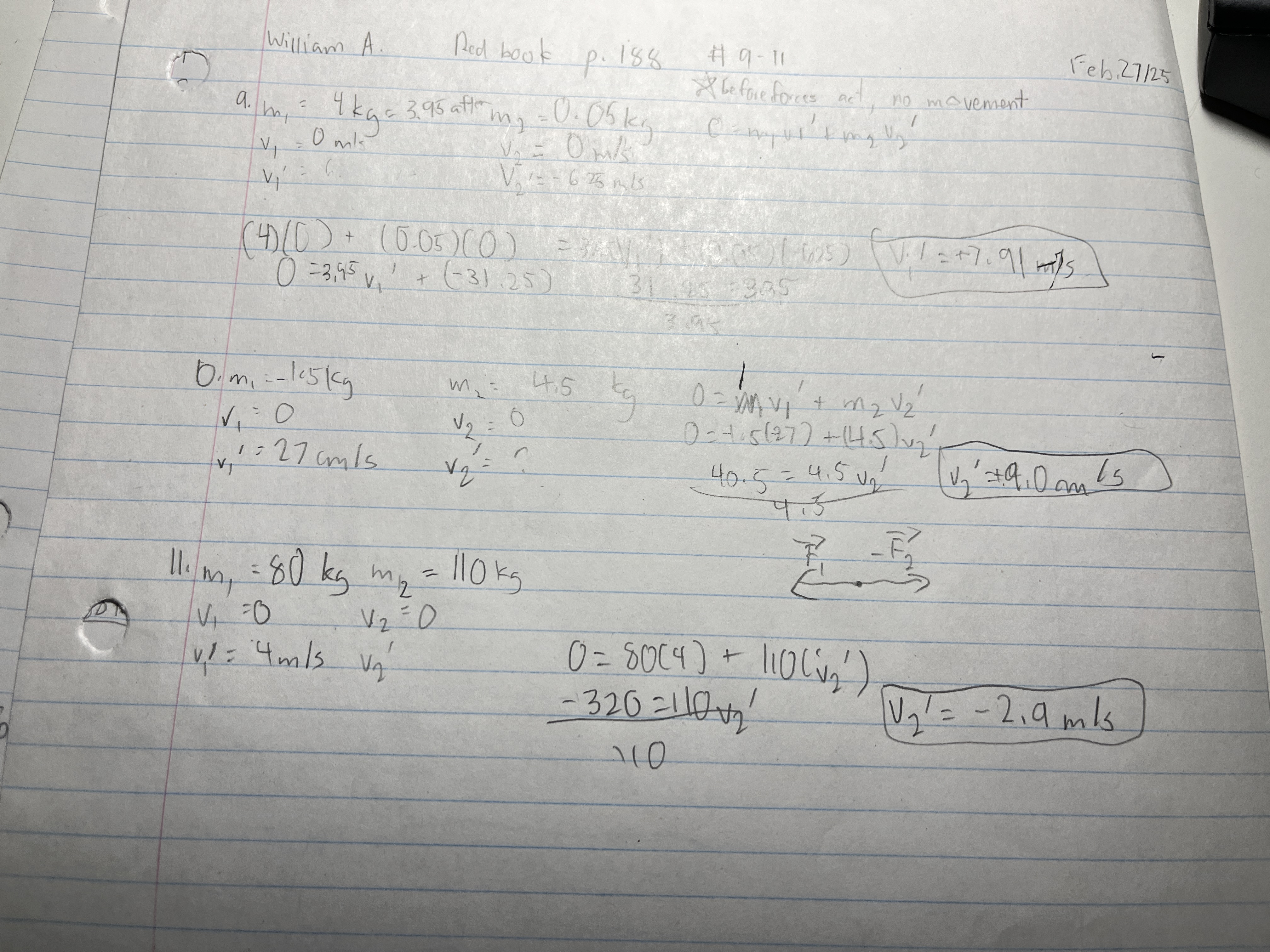
Jenny has a mass of 35.6 kg and her skateboard has a mass of 1.3 kg. What is the momentum of Jenny and her skateboard together if they are going 9.50 m/s?
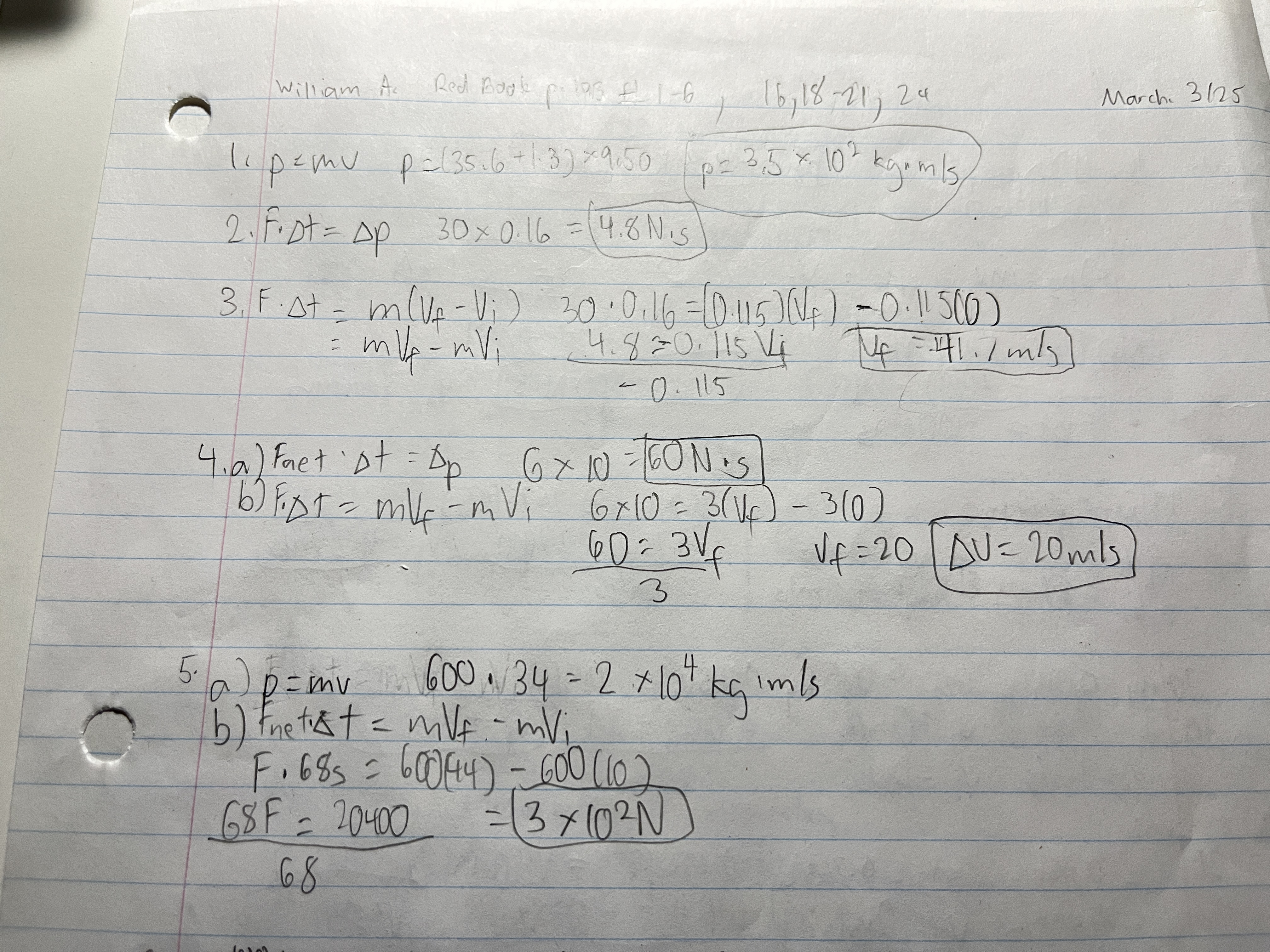
A hockey player makes a slap shot, exerting a force of 30.0 N on the hockey puck for 0.16 s. What impulse is given to the puck?
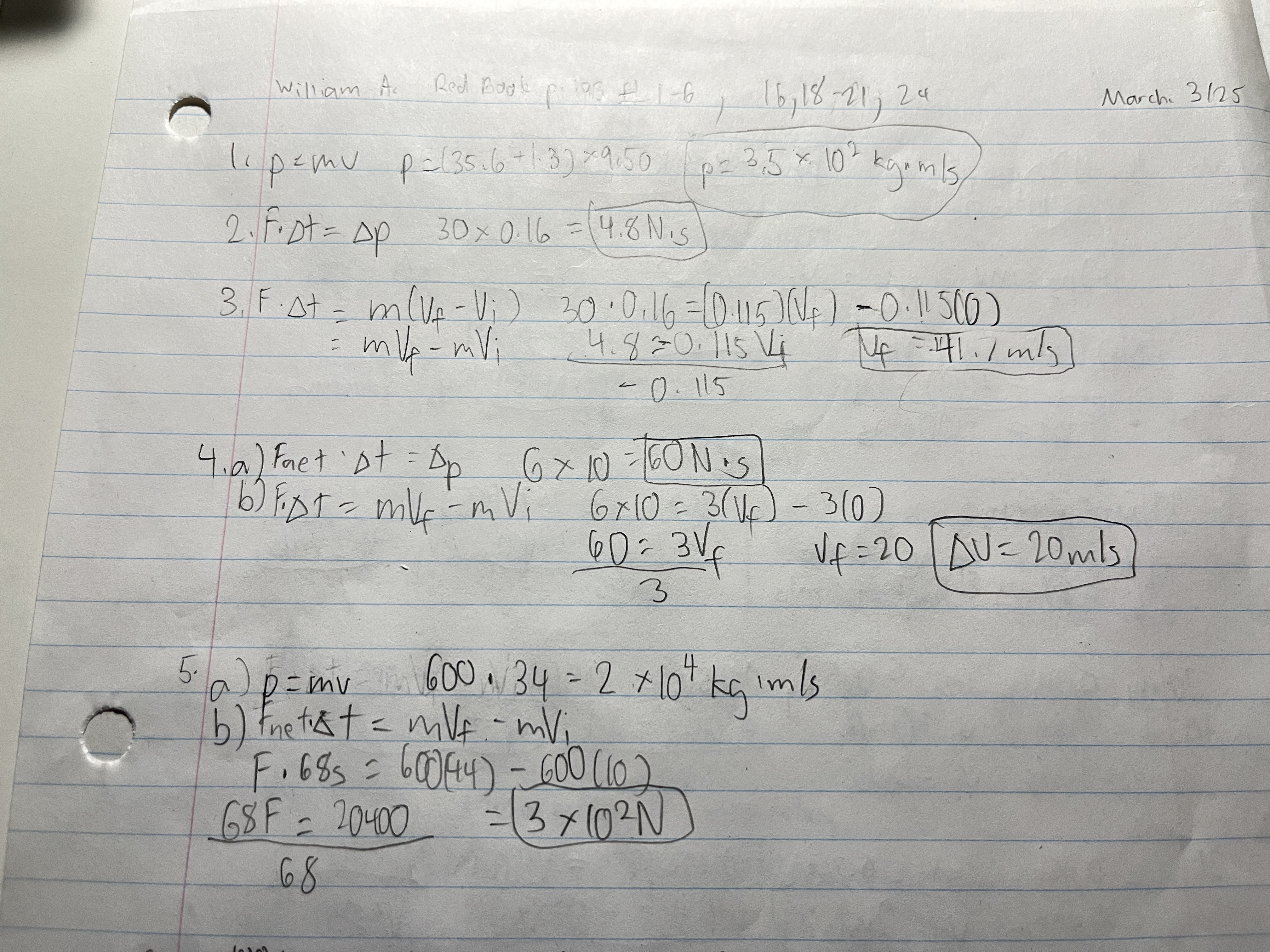
The hockey puck shot with a force of 30.0 N, and a time with 0.16s has a mass of 0.115 kg and was at rest before the shot. With what speed does it head toward the goal?
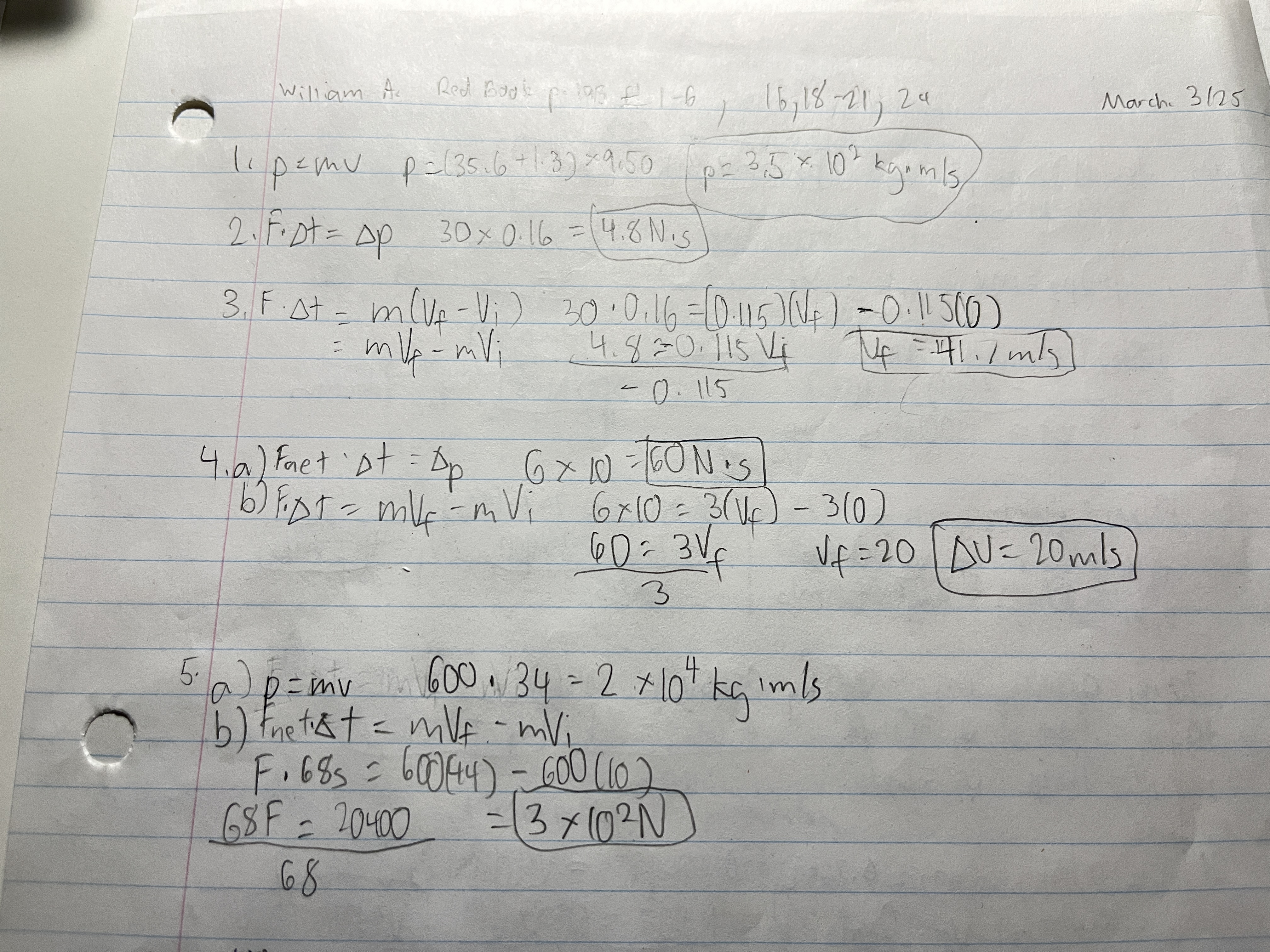
A force of 6.00 N acts of a 3.00 kg object for 10.0s.
a) What is the object’s change in momentum?
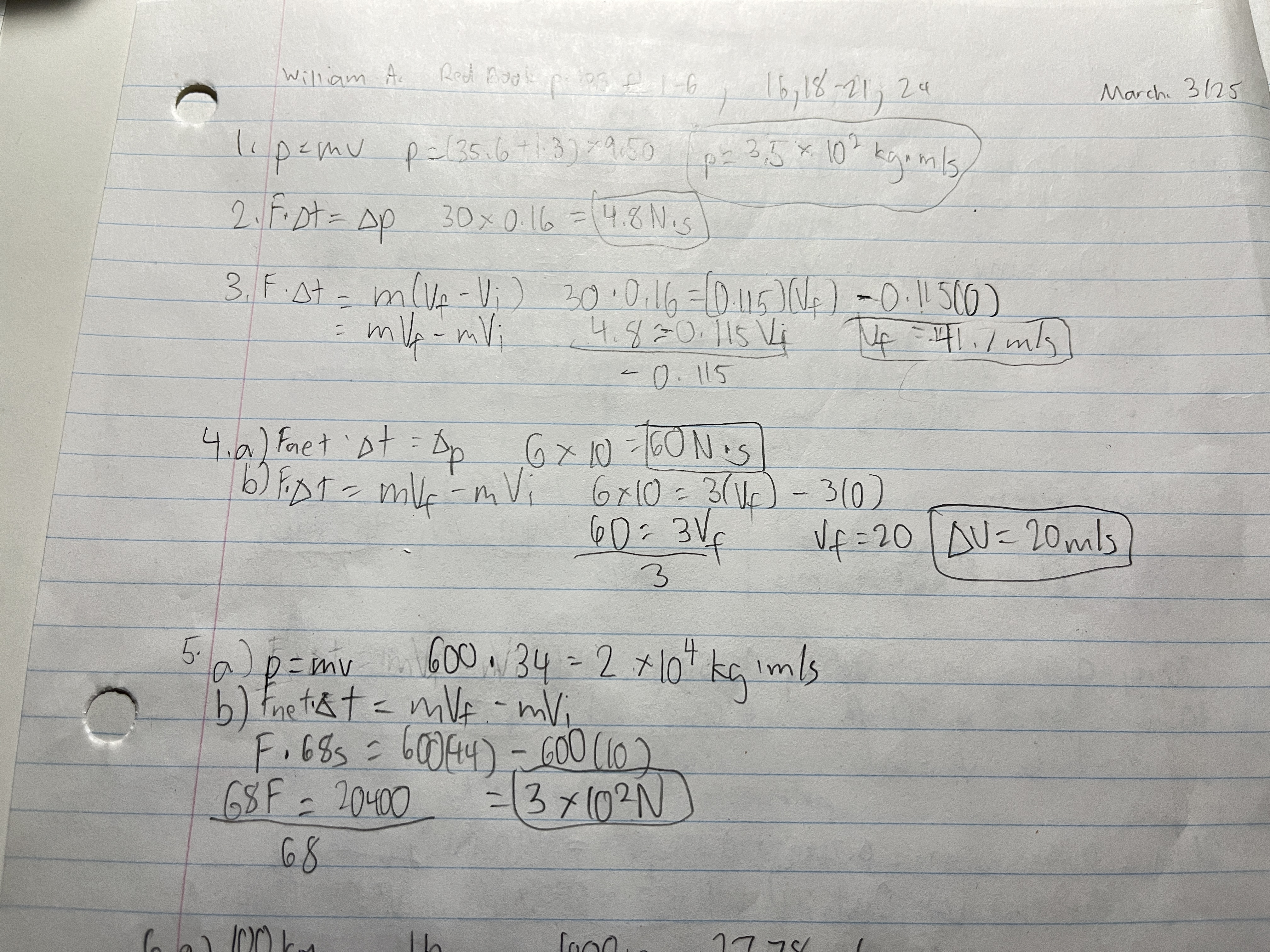
A force of 6.00 N acts of a 3.00 kg object for 10.0s.
b) What is its change in velocity?
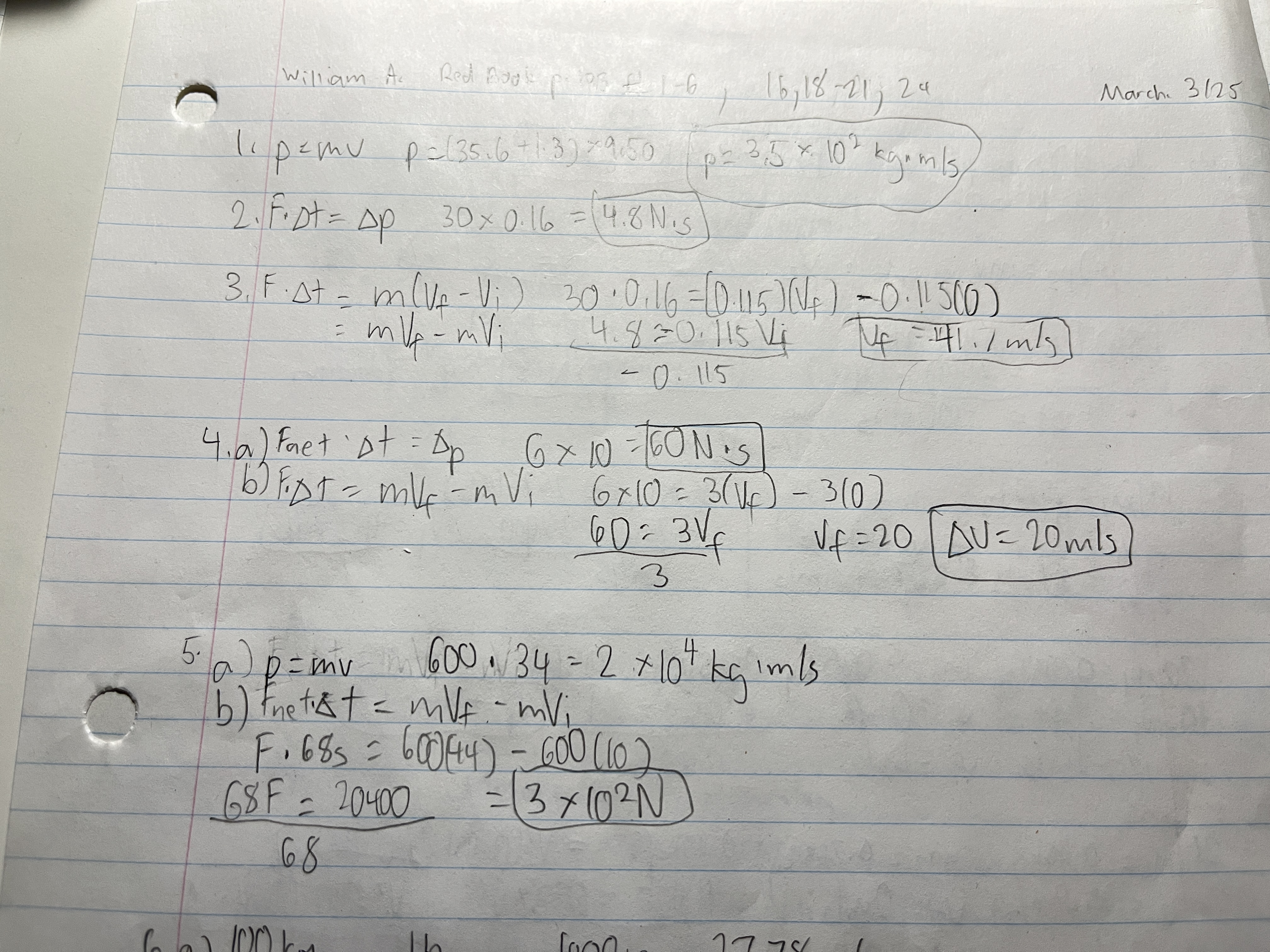
The velocity of a 600 kg auto is changed from +10.0 m/s to +44.0 m/s in 68.0 by an applied, constant force.
a) What change in momentum does the force produce?
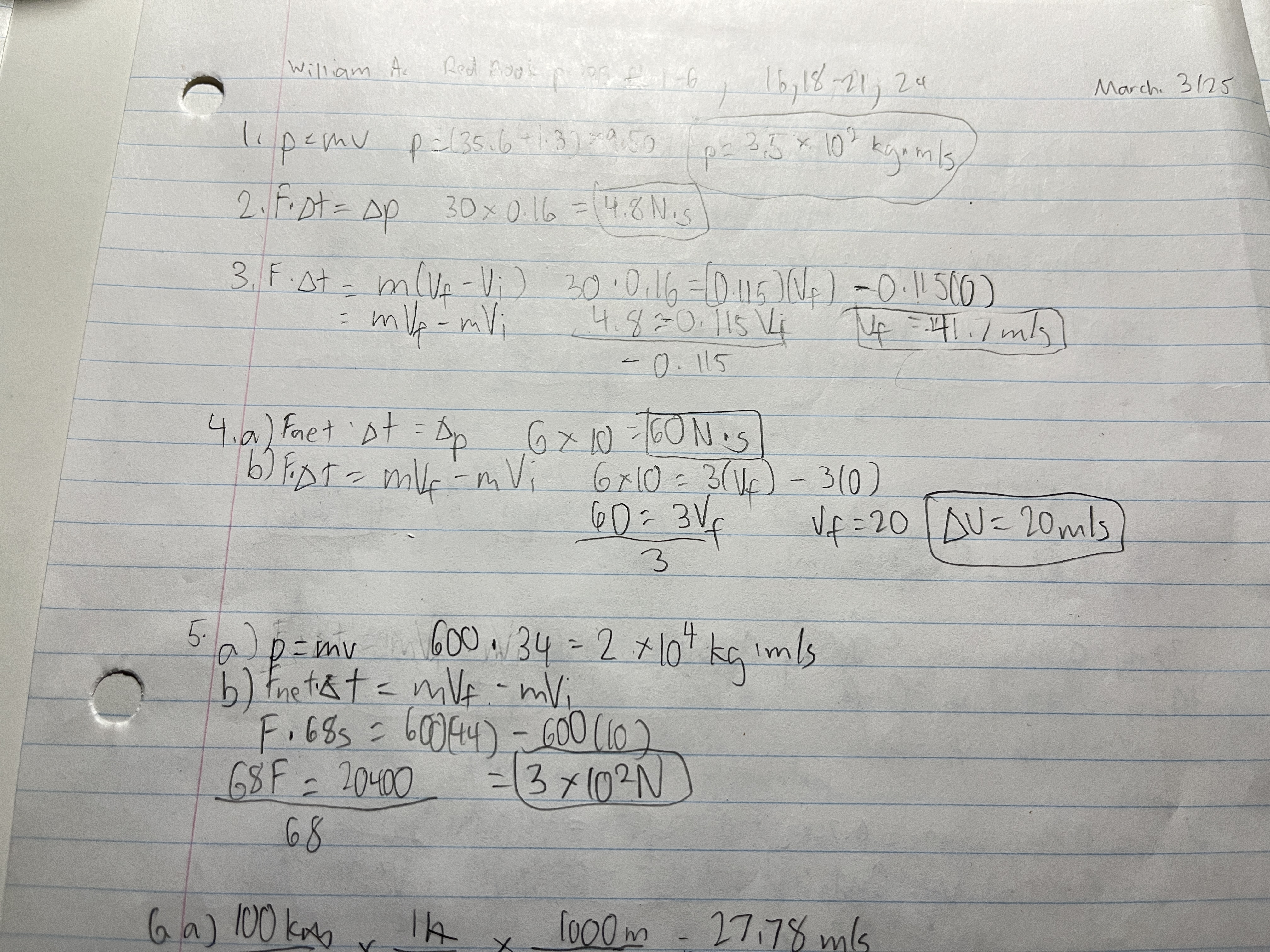
The velocity of a 600 kg auto is changed from +10.0 m/s to +44.0 m/s in 68.0 by an applied, constant force.
b) What is the magnitude of the force?
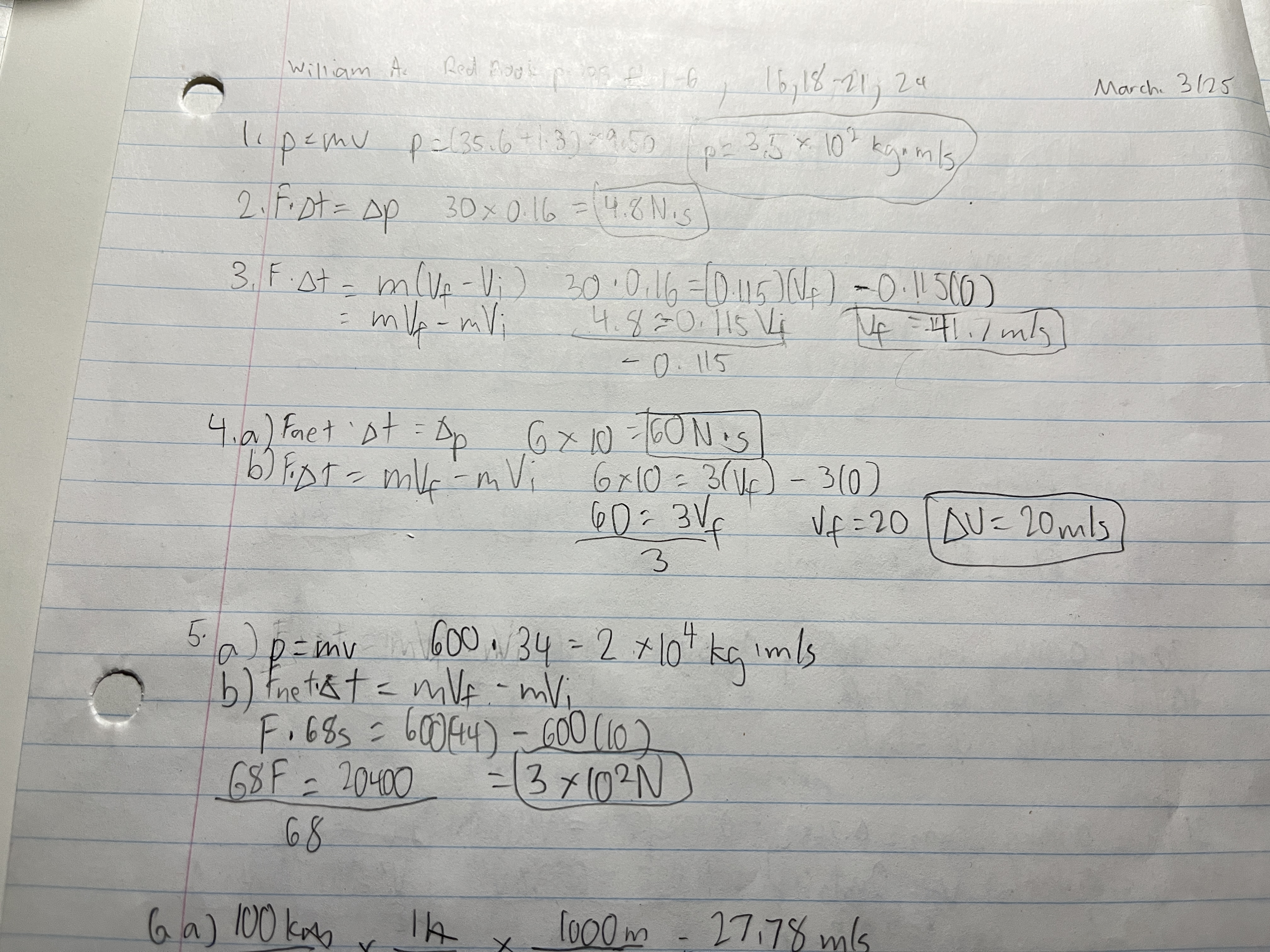
A 845 kg drag race car accelerates from rest to 100 km/h in 0.90s.
a) What is the change in momentum of the car?
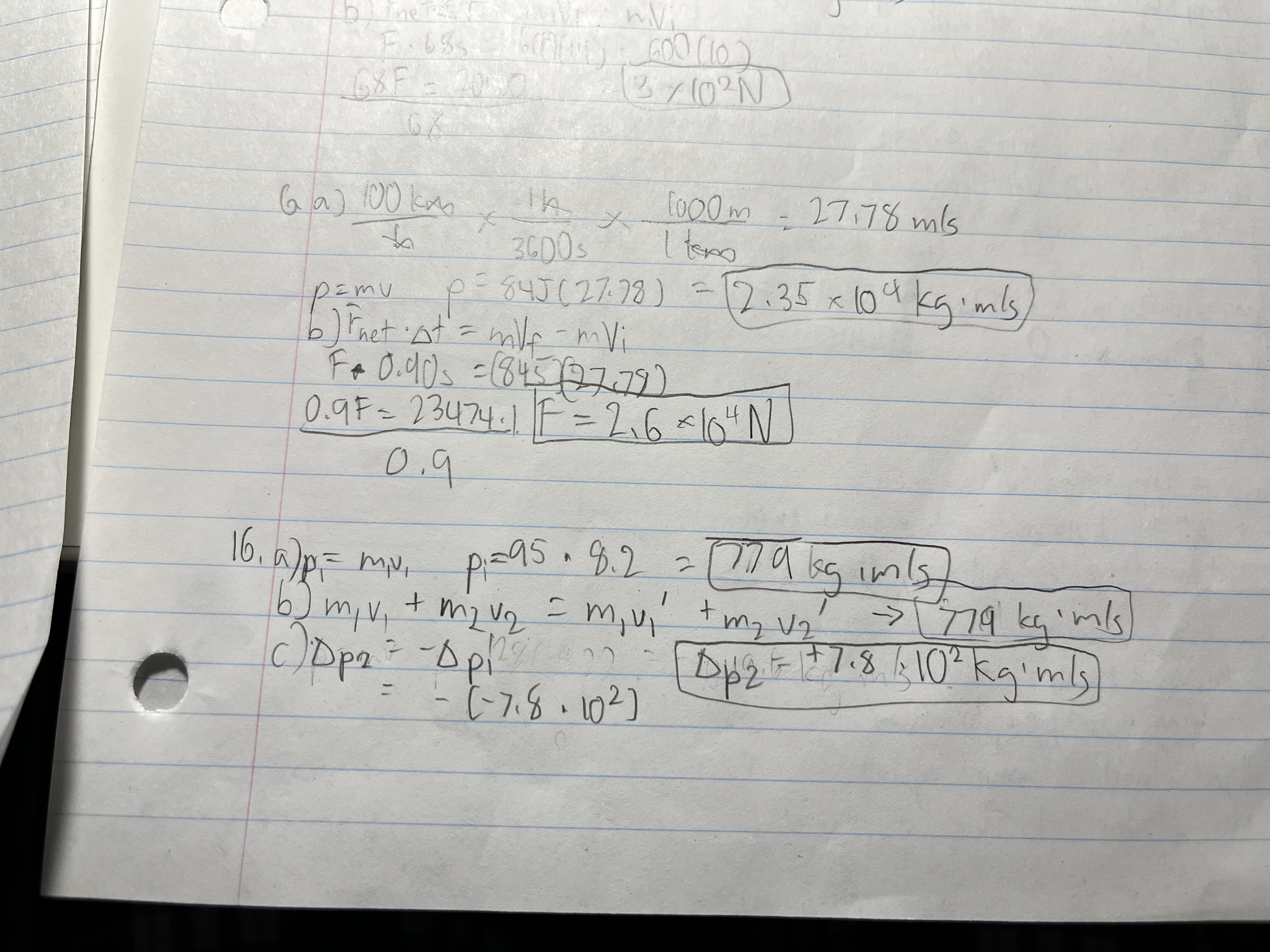
A 845 kg drag race car accelerates from rest to 100 km/h in 0.90s.
b) What average force is exerted on the car?
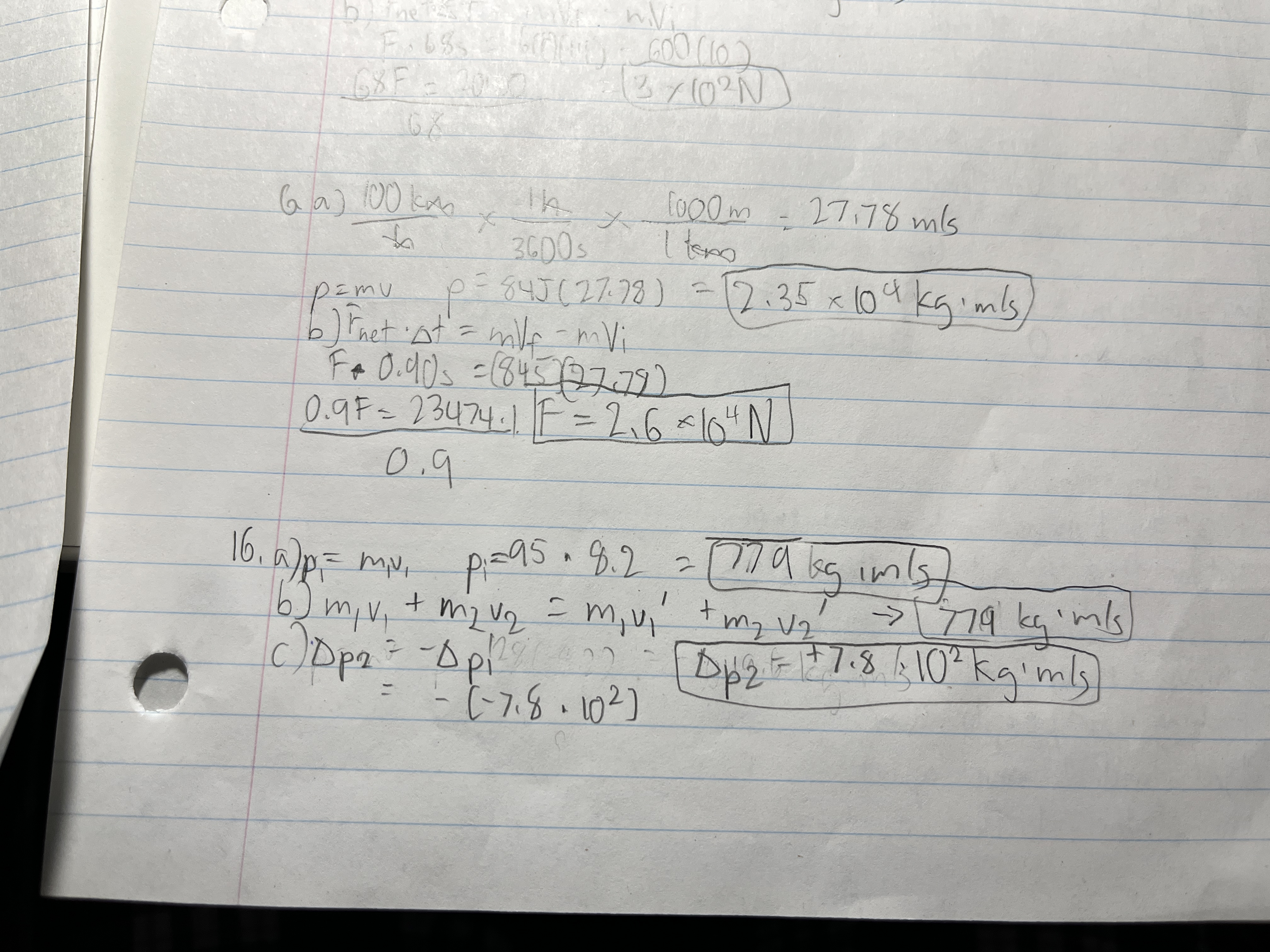
A 95 kg fullback, running at 8.2 m/s, collides in midair with a 128 kg defensive tackle moving in the opposite direction. Both players end up with zero speed.
a) What was the fullback’s momentum before the collision?
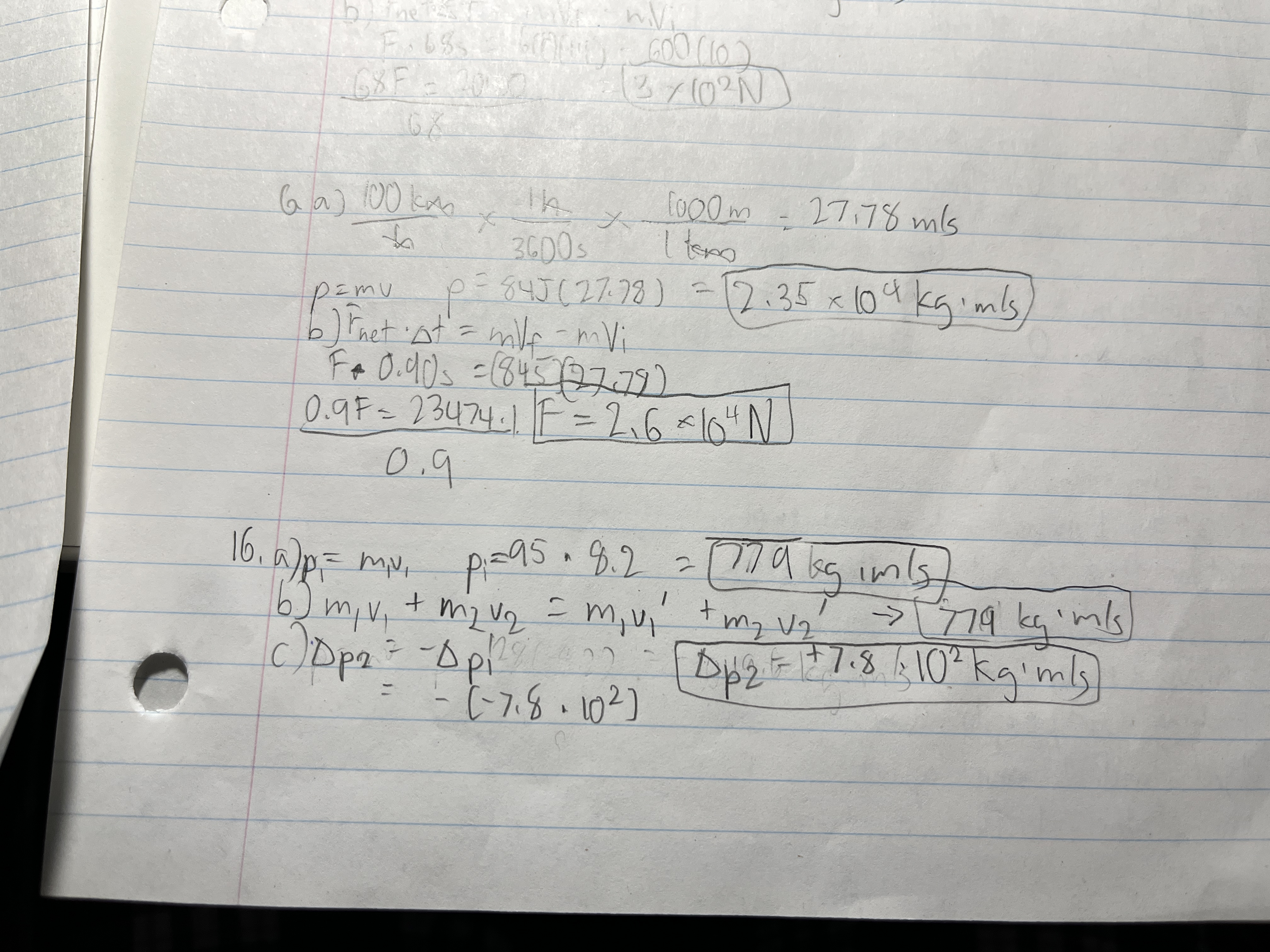
A 95 kg fullback, running at 8.2 m/s, collides in midair with a 128 kg defensive tackle moving in the opposite direction. Both players end up with zero speed.
b) What was the change in the fullback’s momentum?
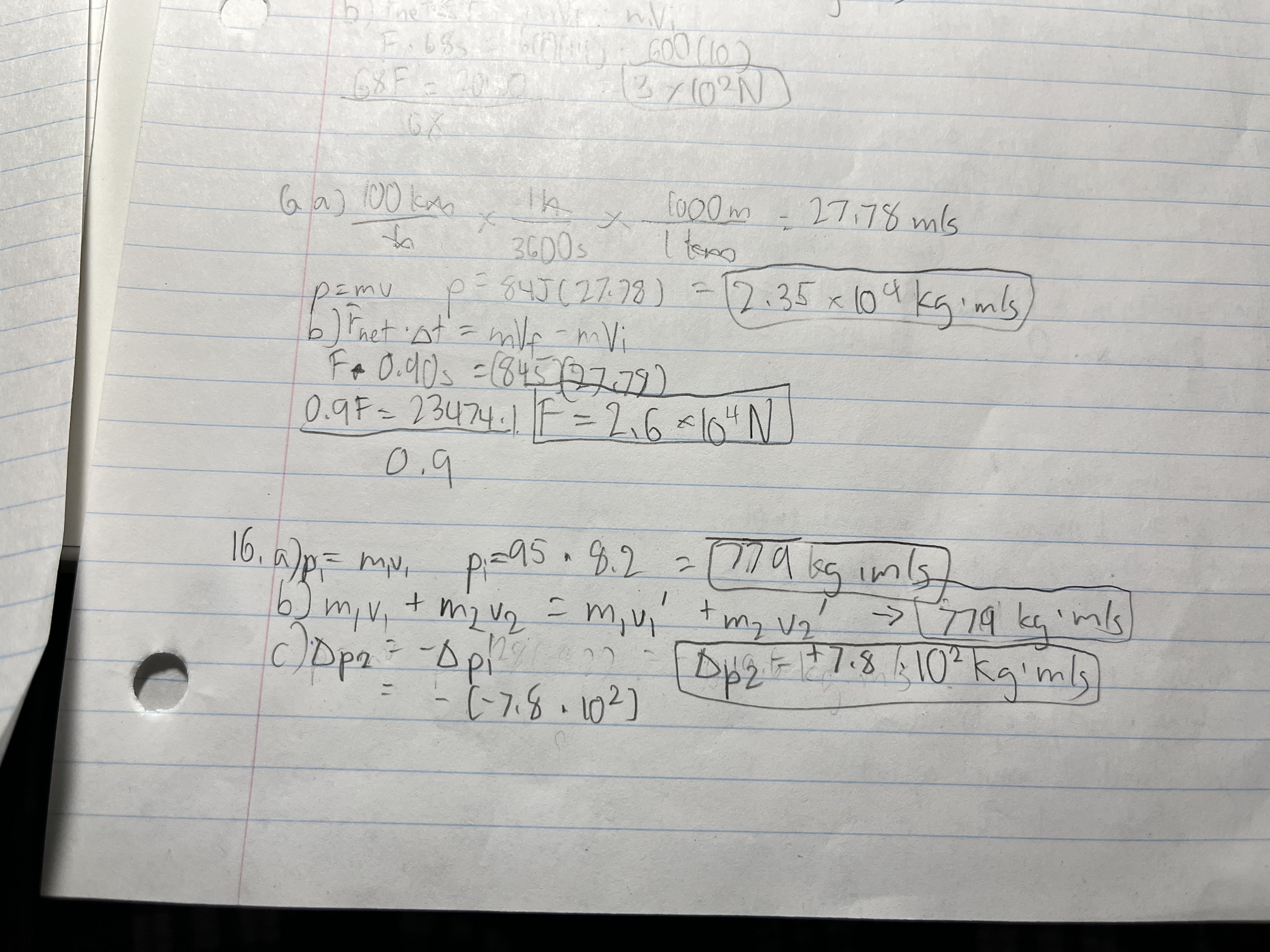
A 95 kg fullback, running at 8.2 m/s, collides in midair with a 128 kg defensive tackle moving in the opposite direction. Both players end up with zero speed.
c) What was the change in the tackle’s momentum?
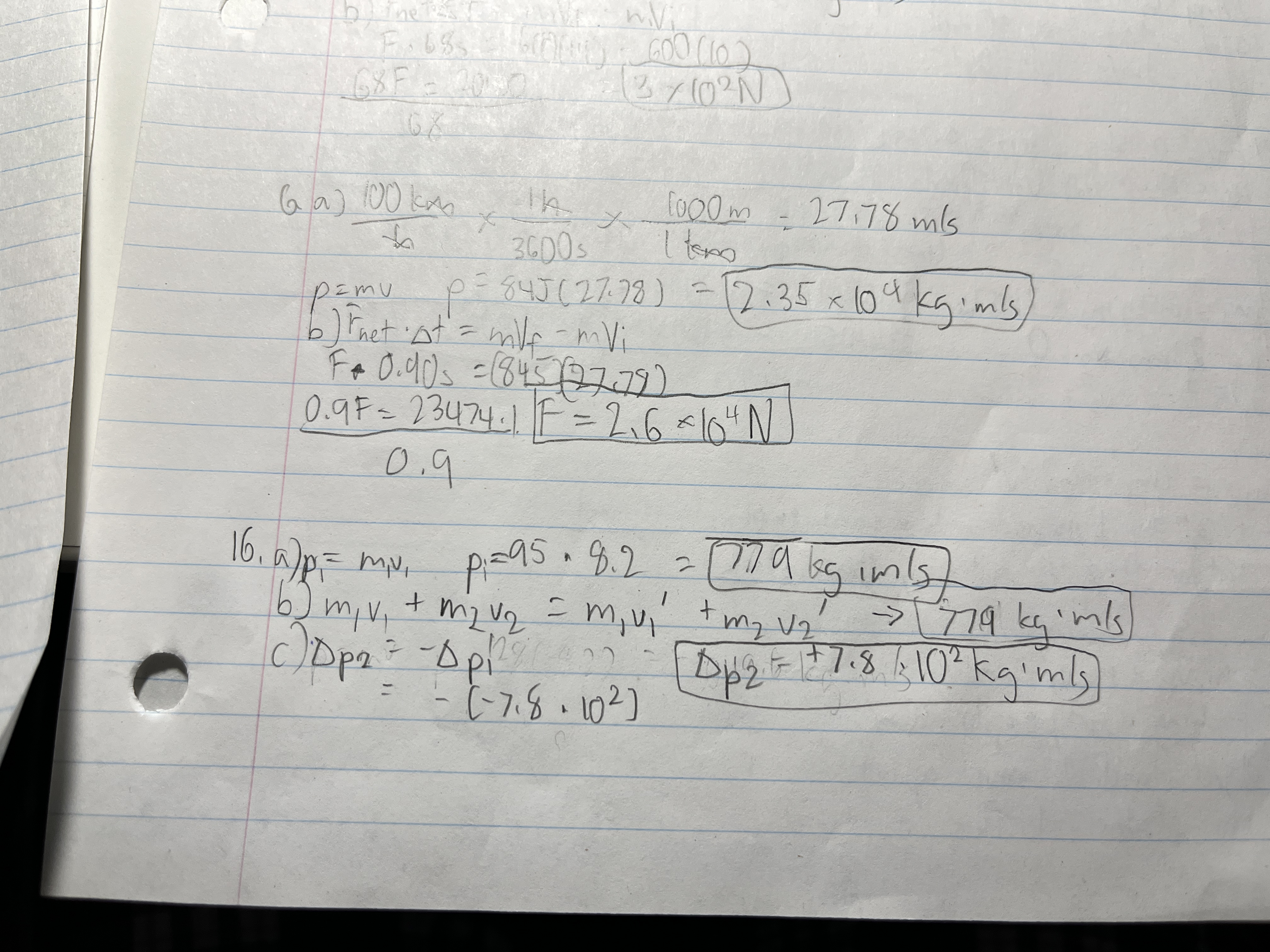
A 95 kg fullback, running at 8.2 m/s, collides in midair with a 128 kg defensive tackle moving in the opposite direction. Both players end up with zero speed.
d) What was the tackle’s original momentum?
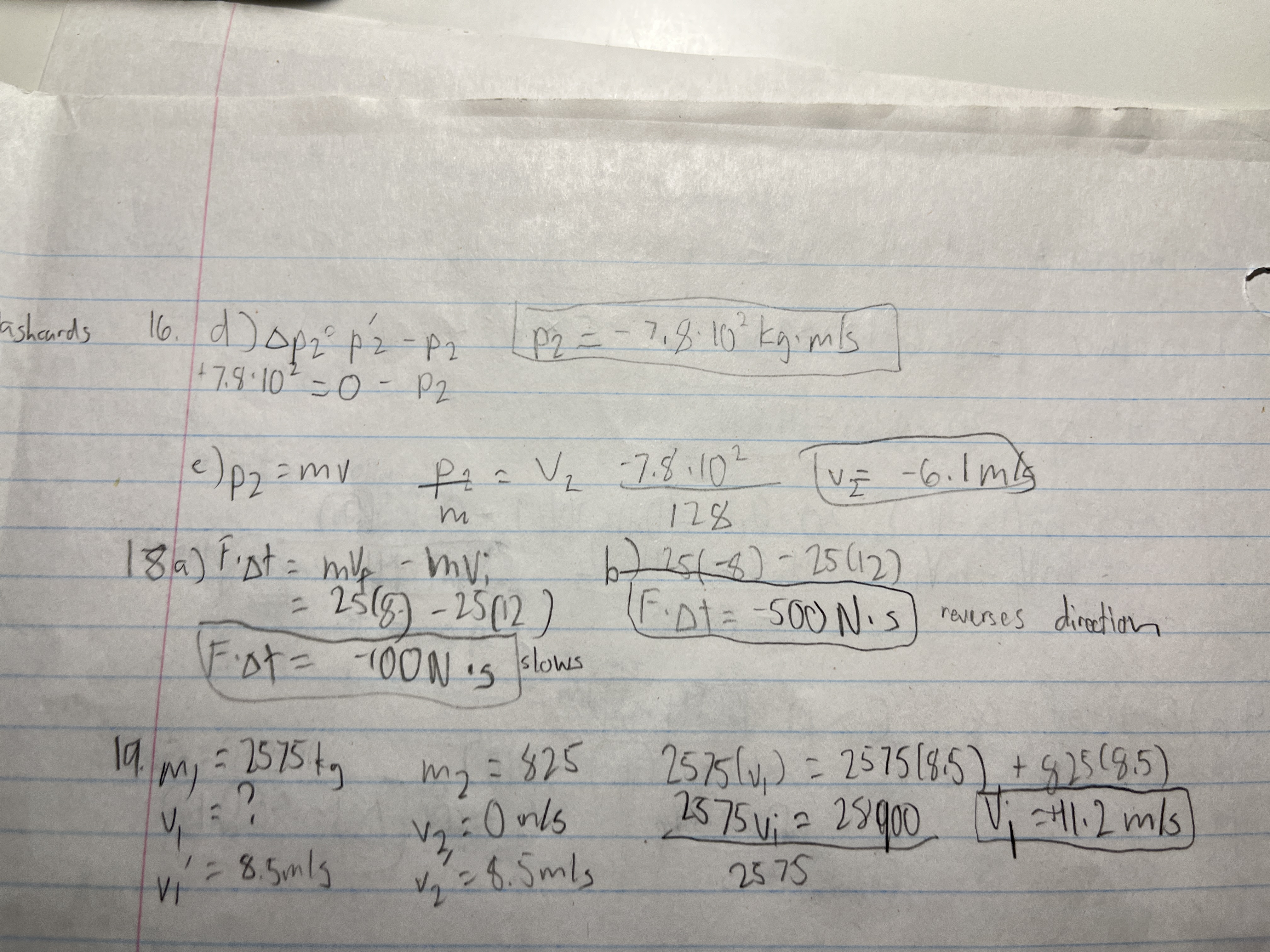
A 95 kg fullback, running at 8.2 m/s, collides in midair with a 128 kg defensive tackle moving in the opposite direction. Both players end up with zero speed.
e) How fast was the tackle moving originally?
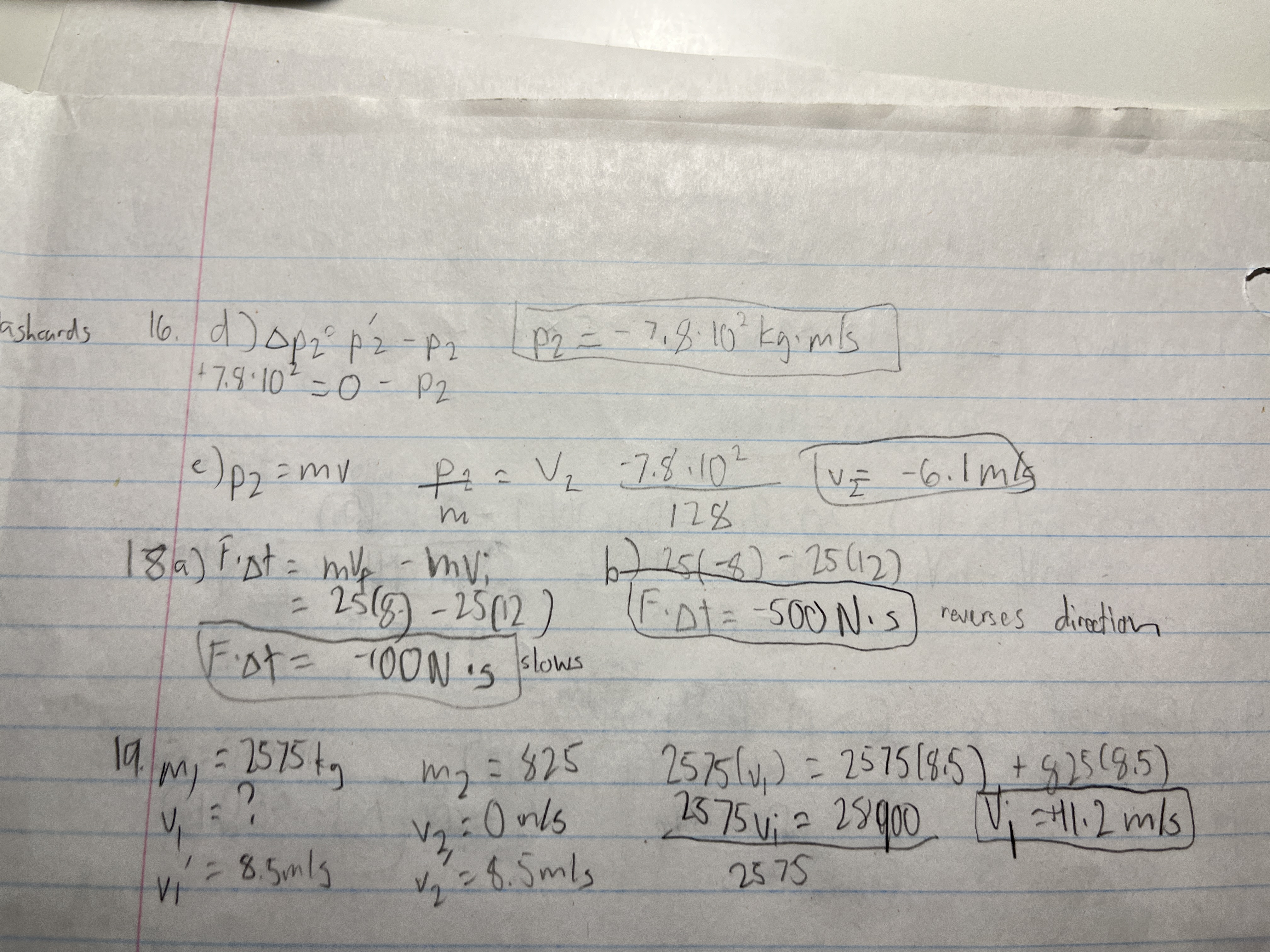
Before a collision, a 25 kg object is moving at +12 m/s. Find the impulse that acted on this object if after the collision it moves at
a) +8 m/s
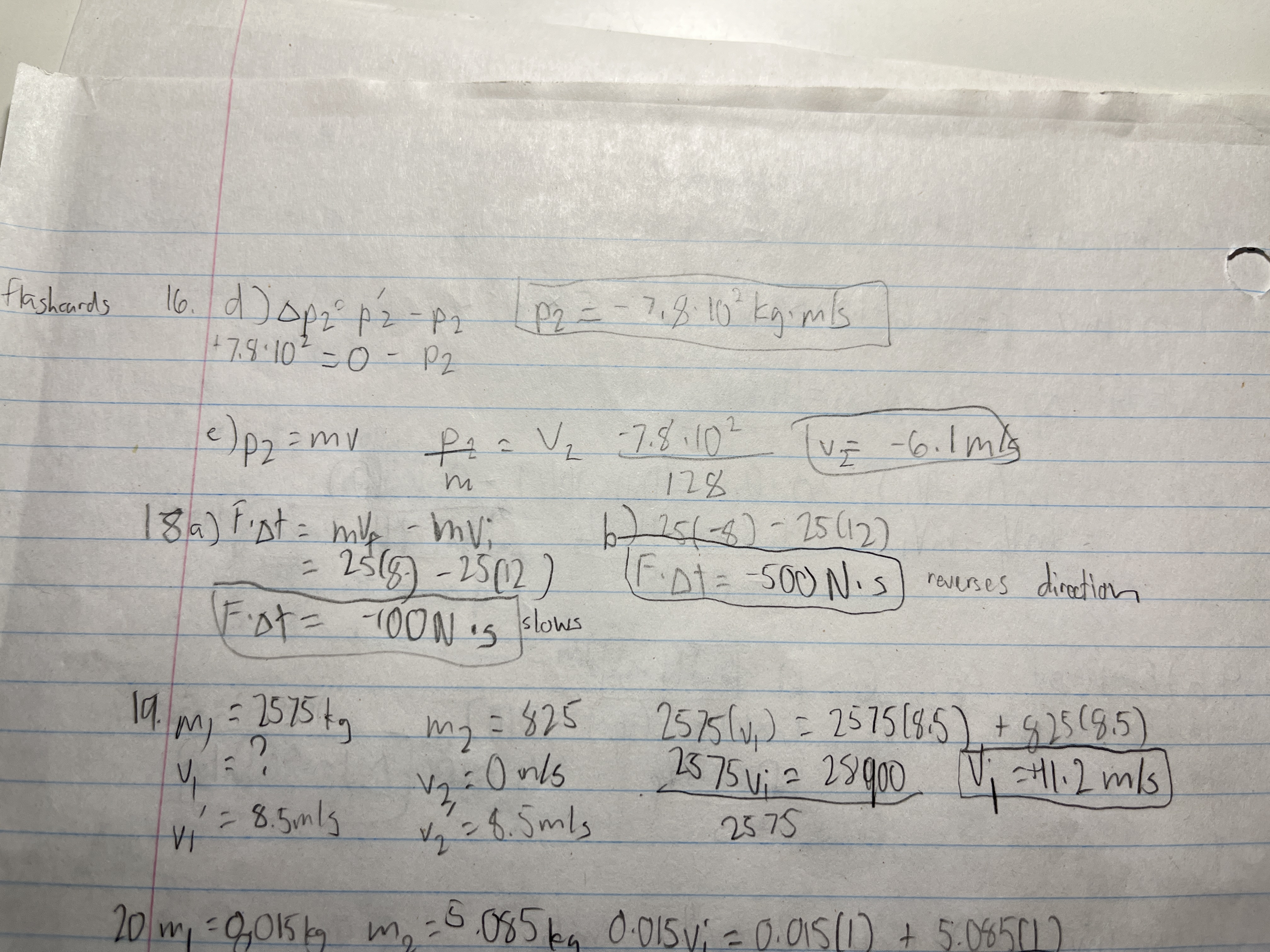
Before a collision, a 25 kg object is moving at +12 m/s. Find the impulse that acted on this object if after the collision it moves at
b) -8 m/s
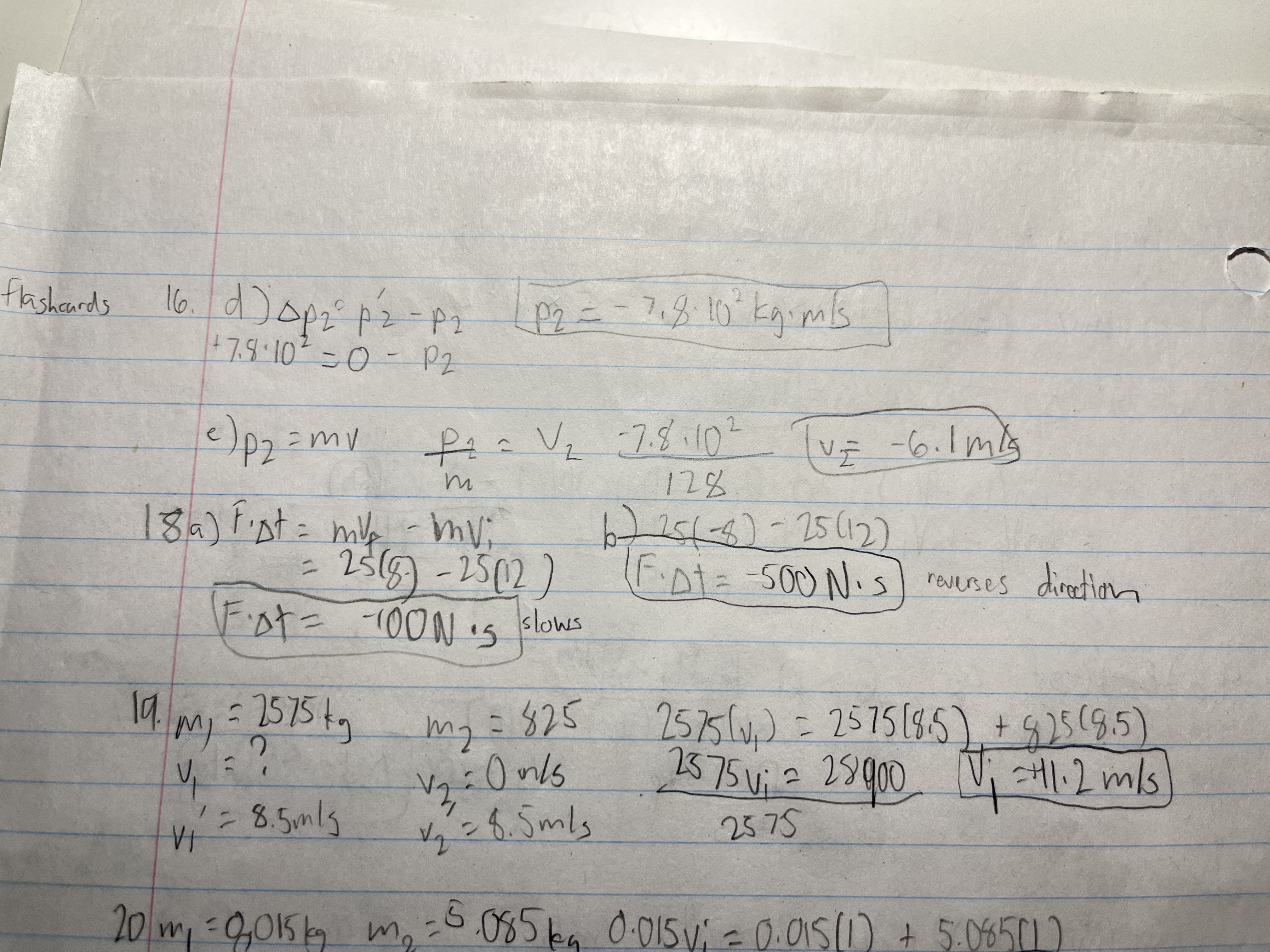
A 2575 kg van runs into the back of a 825 kg compact car at rest. They move off together at 8.5 m/s. Assuming no friction with the ground, find the initial speed of the van.

A 15 g bullet is shot into a 5085 g wooden block standing on a frictionless surface. The block, with a bullet in it, acquires a velocity of 1.0 m/s. Calculate the velocity of the bullet before striking the block.
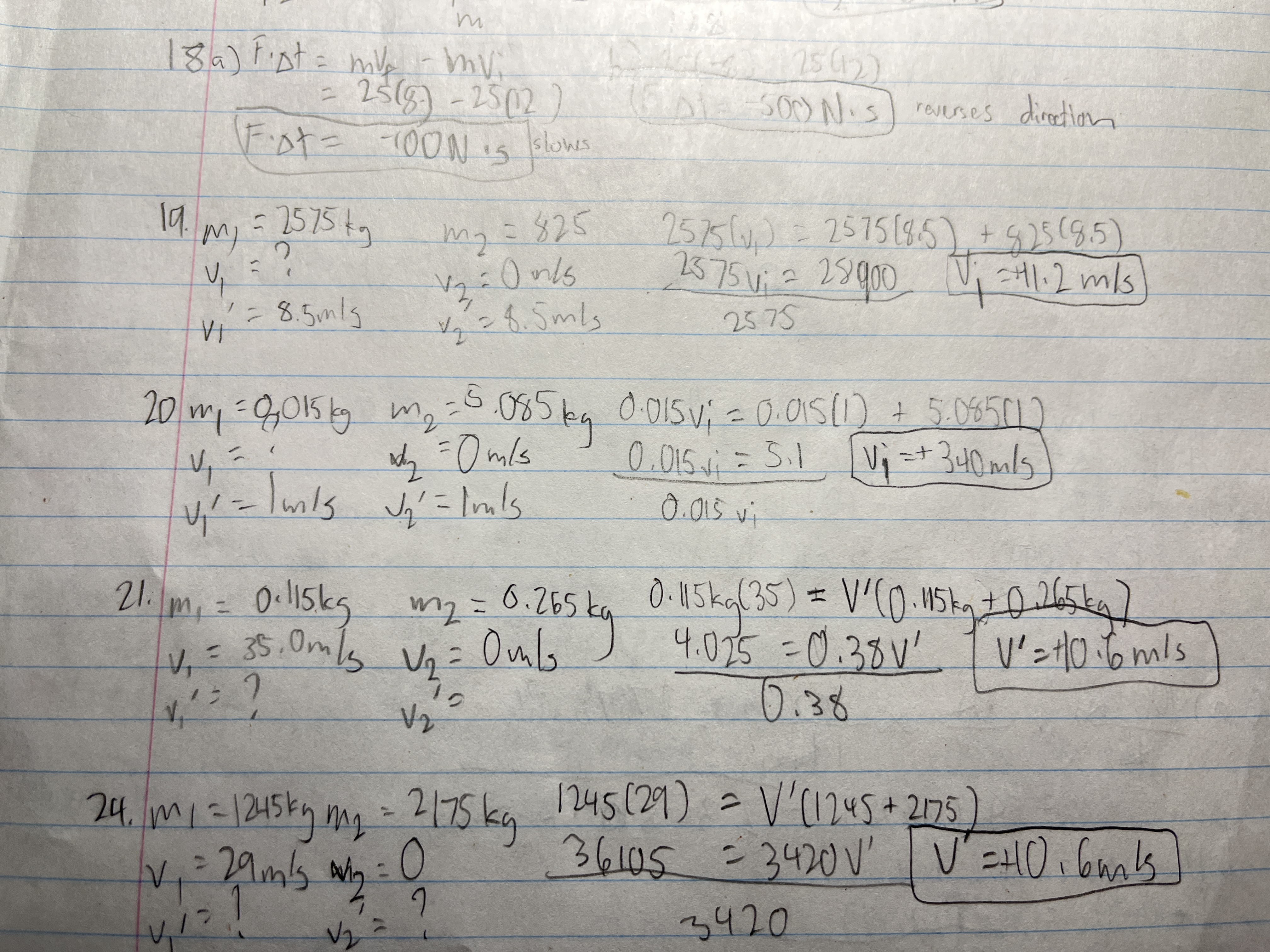
A hockey puck, mass 0.115 kg, moving at 35.0 m/s, strikes a rubber octopus thrown on the ice by a fan. The octopus has a mass of 0.265 kg. The puck and octopus slide off together. Find their velocity
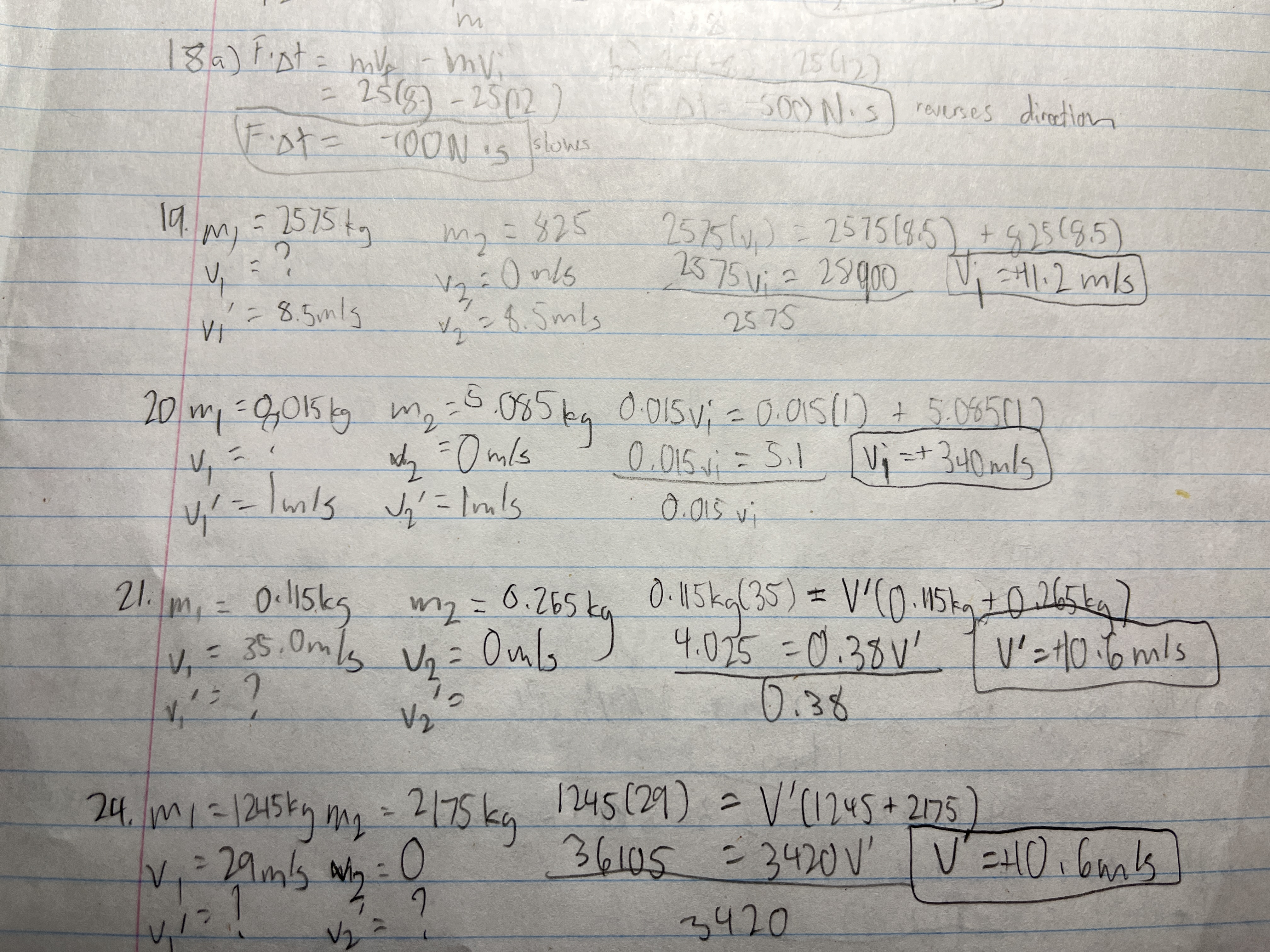
A car with mass 1245 kg, moving at 29 m/s, strikes a 2175 car at rest. If the two cars stick together, with what speed do they move?
